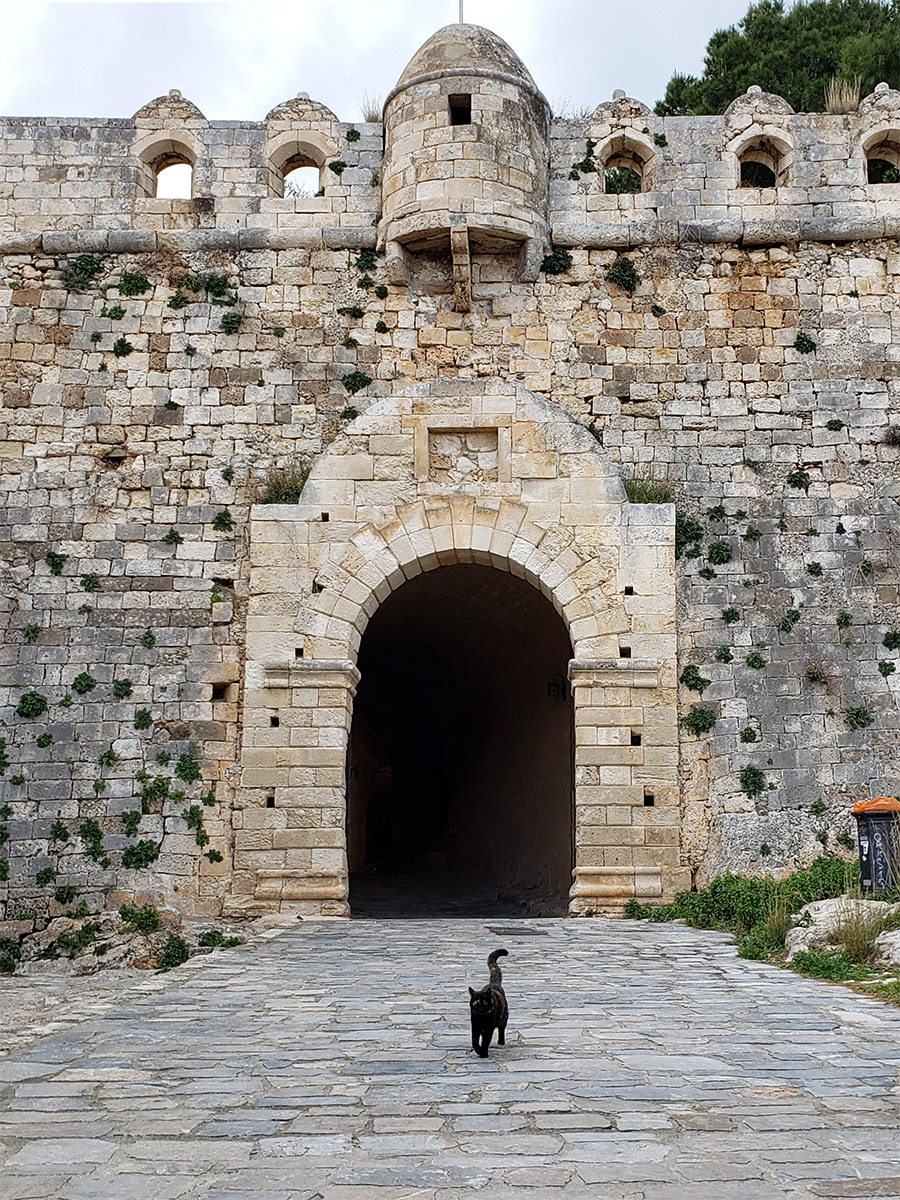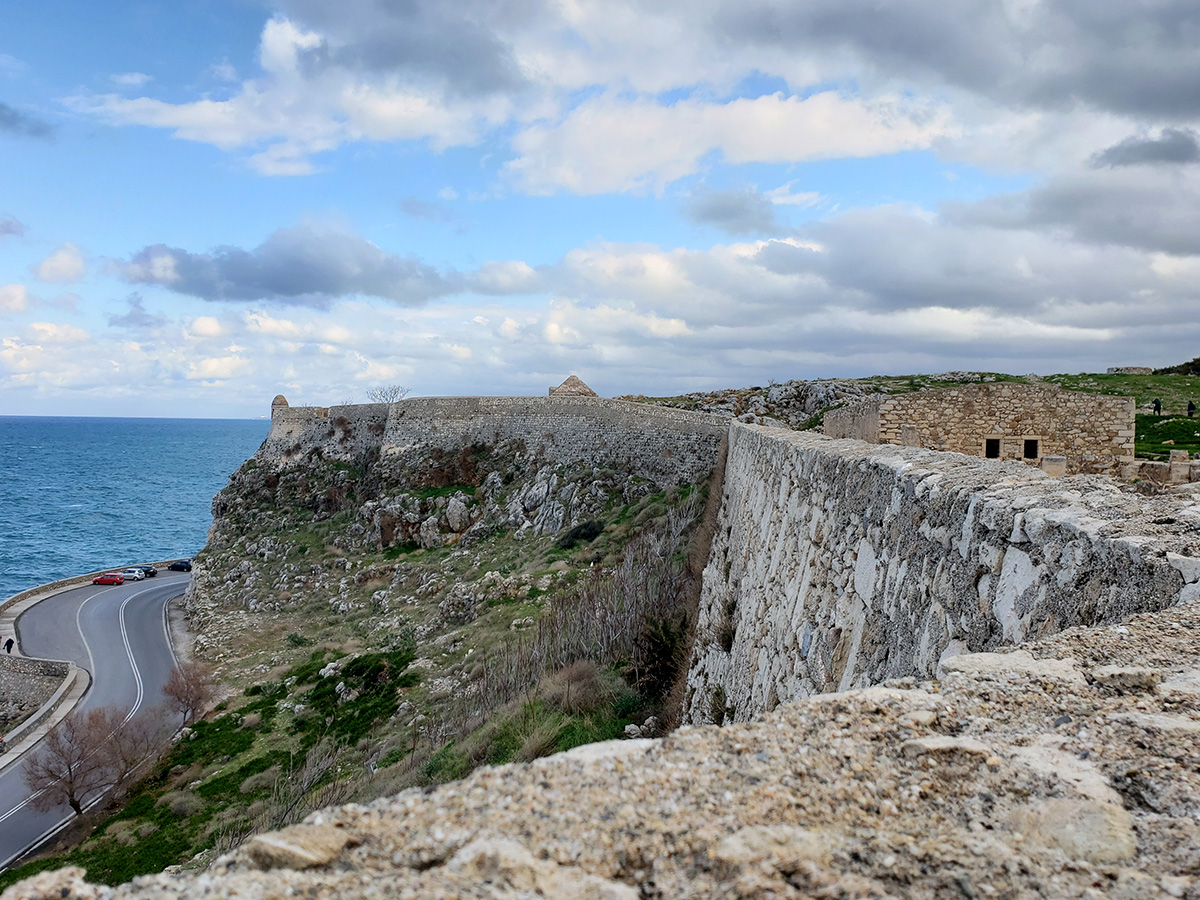
Rethymno may be smaller than Chania, but its Venetian Fortezza (fortress, aka castle) is much more impressive than the Firka in Chania. We’d been warned the Fortezza might be closed due to recent rainy weather, but we wandered up anyway, if only to take some photos of the outside.
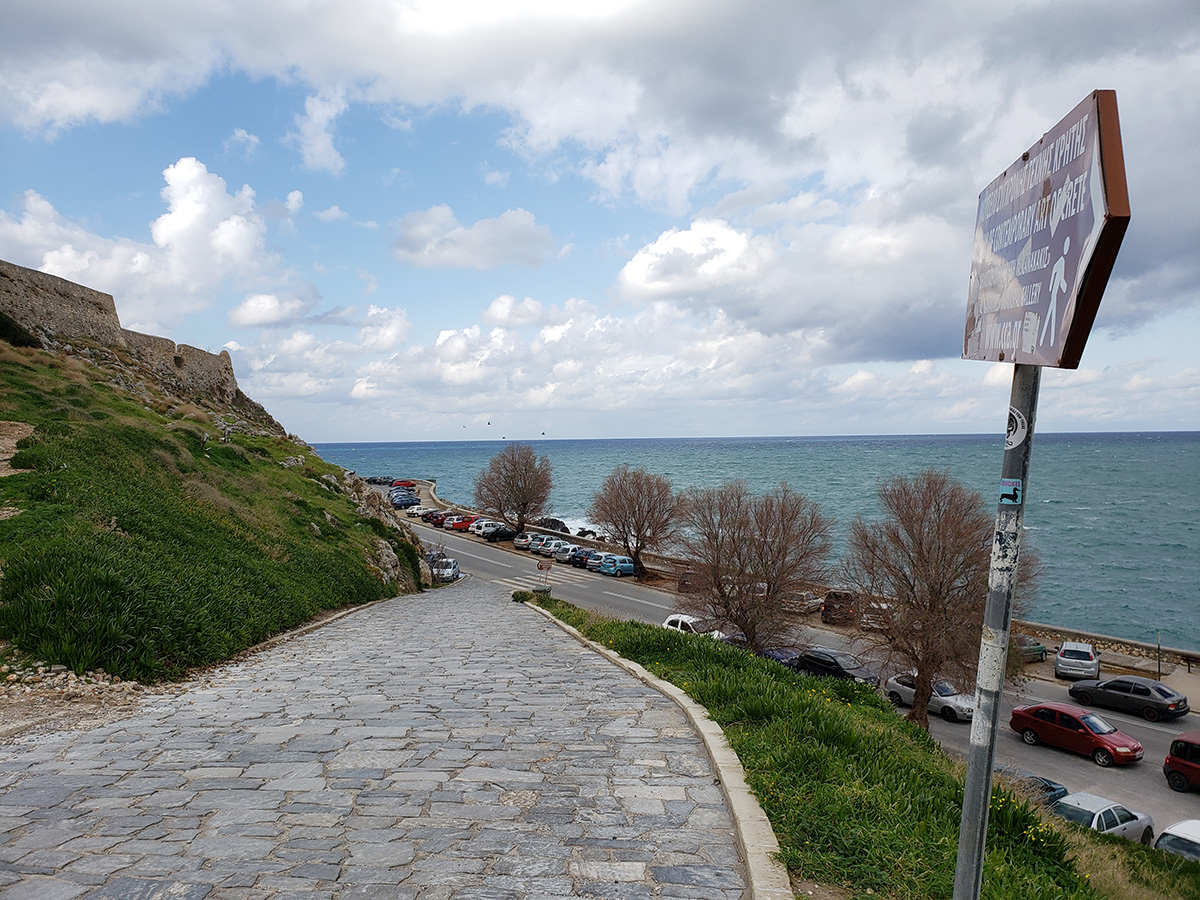
And from the outside the walls of the Fortezza are definitely imposing. Despite these walls, however, the Venetians lost the fortress — and the town — to the Ottomans in 1646 following a siege during which the residents holed up inside.
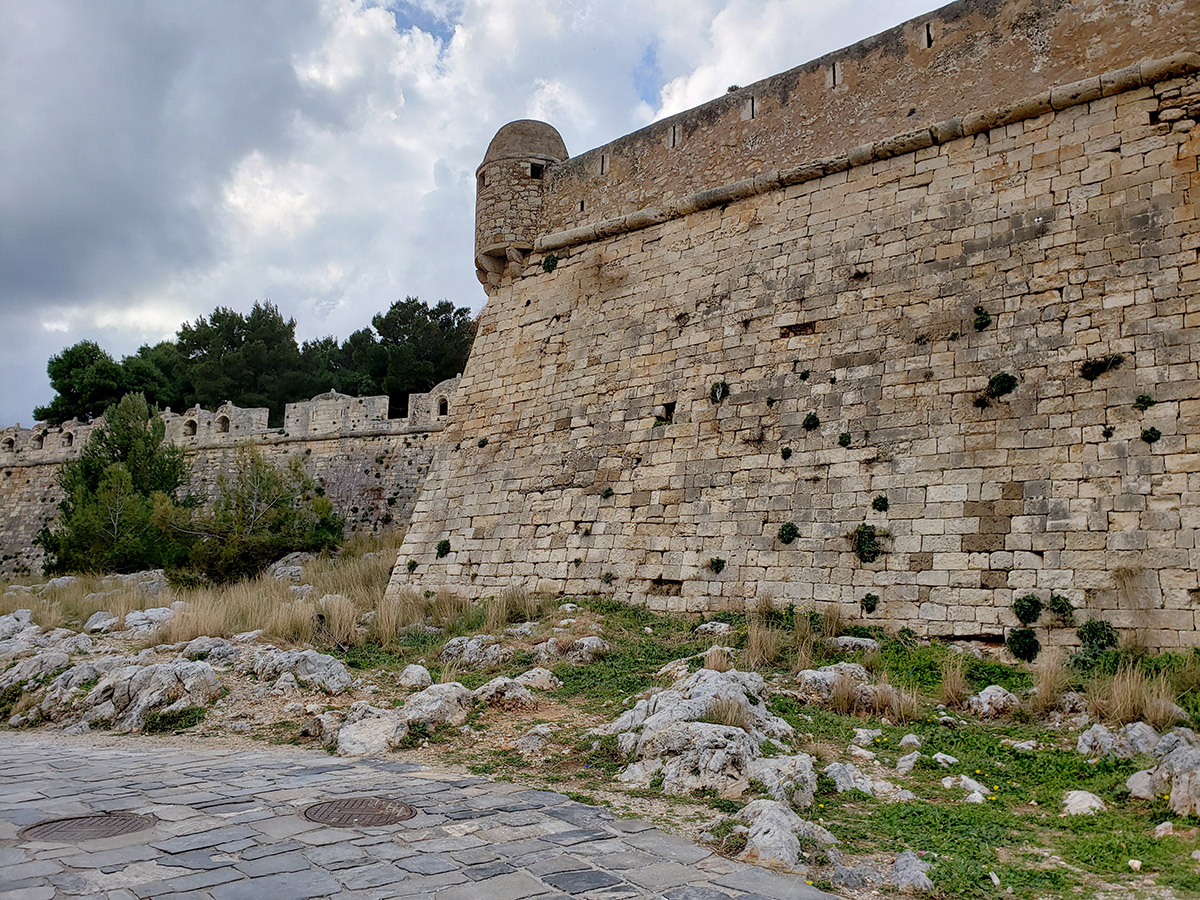
When we reached the eastern gate, we were happy to find it open — and better yet, the ticket booth was shuttered, so we entered free of charge. Only a handful of other visitors were wandering the space inside.
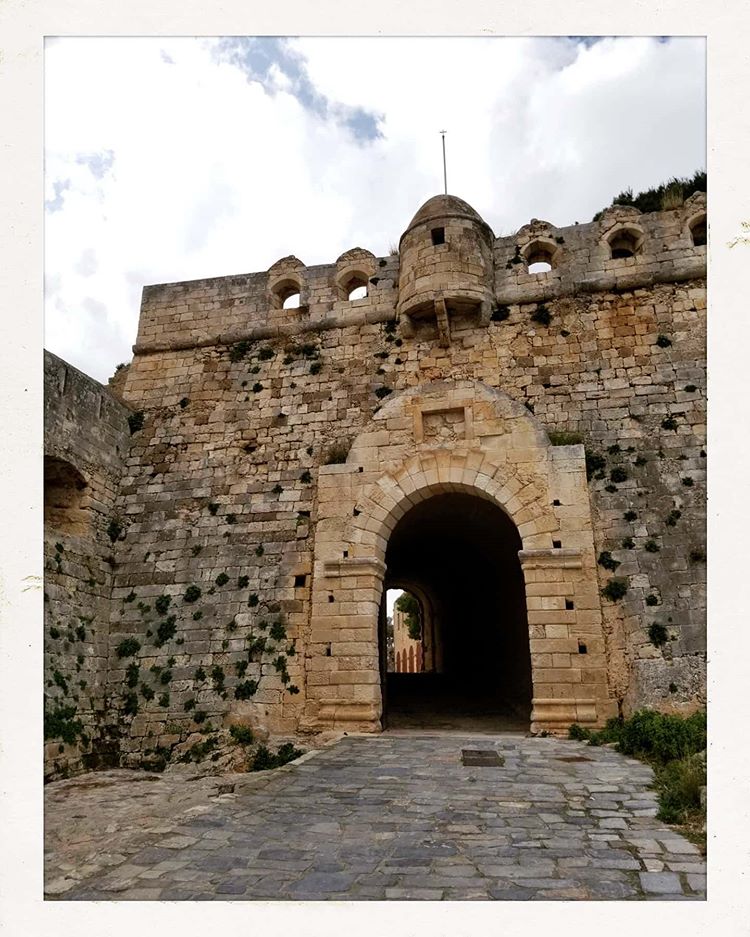
Just inside the gate an orange cat was awkwardly feasting from a precariously positioned bowl of cat food.
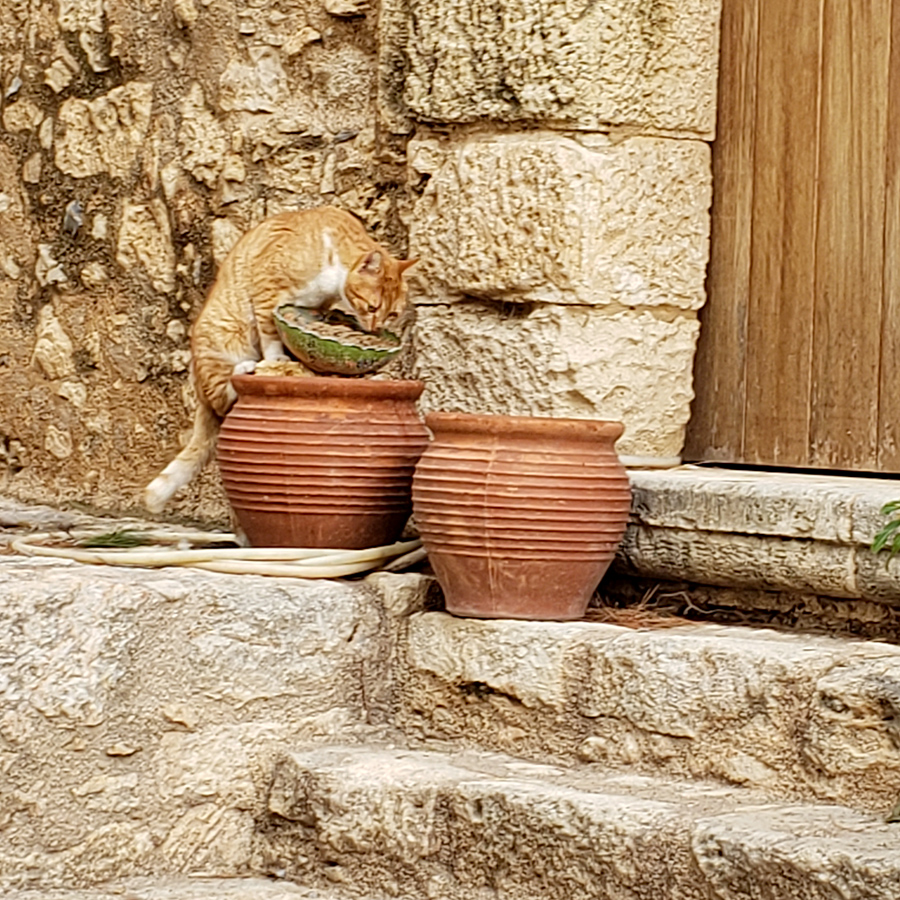
The Fortezza consists of vast and open spaces sprinkled with buildings. Around the perimeter are the imposing defensive walls, positioned at the side of cliffs that look down to the sea below.
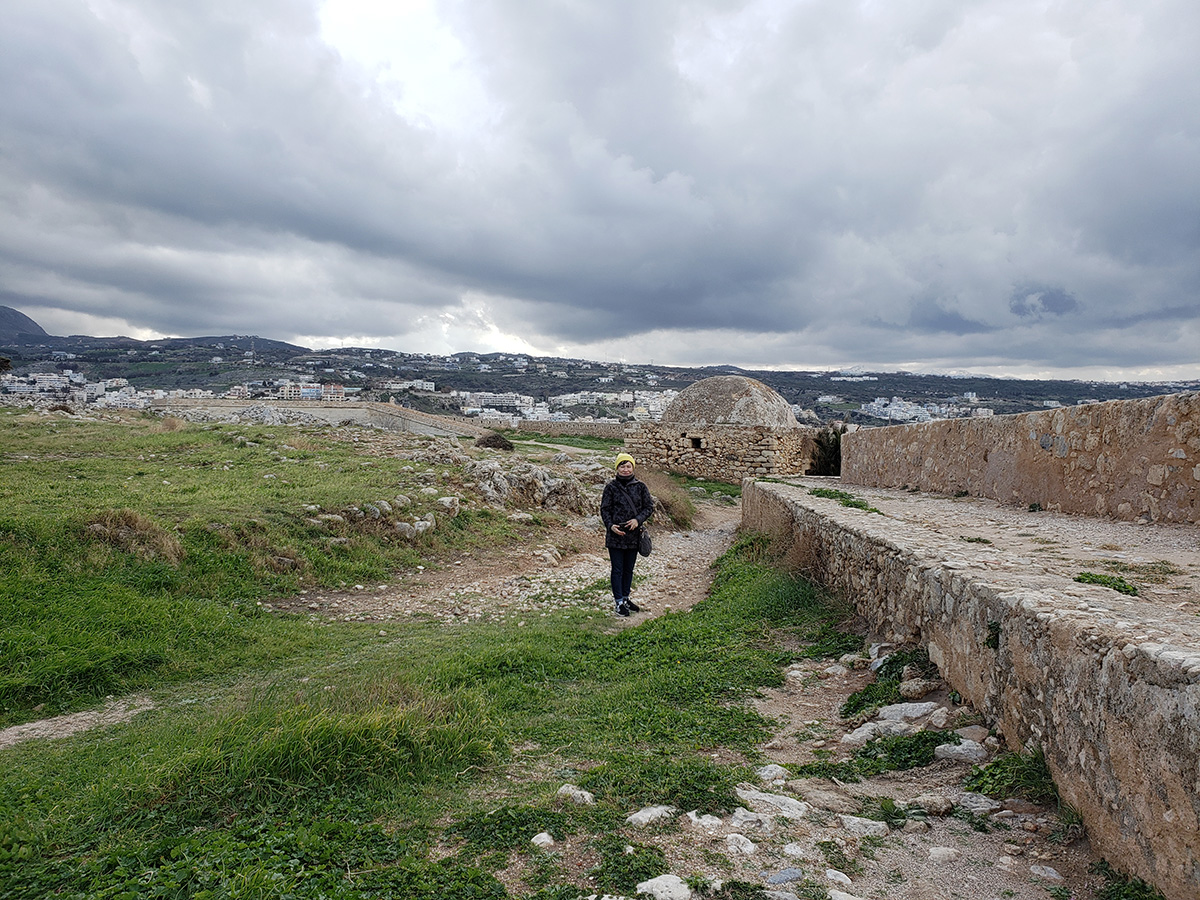
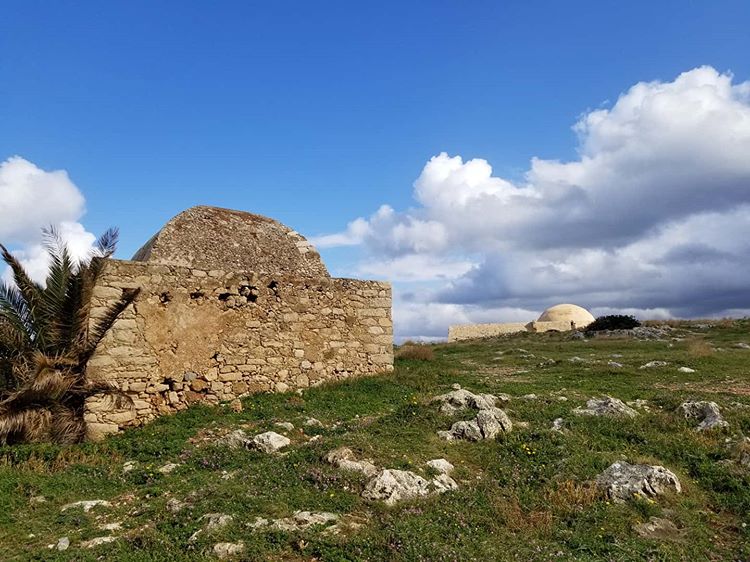

The safety of visitors is ensured by the presence of tiny little chains across openings that could lead to certain death. Keep your head up.
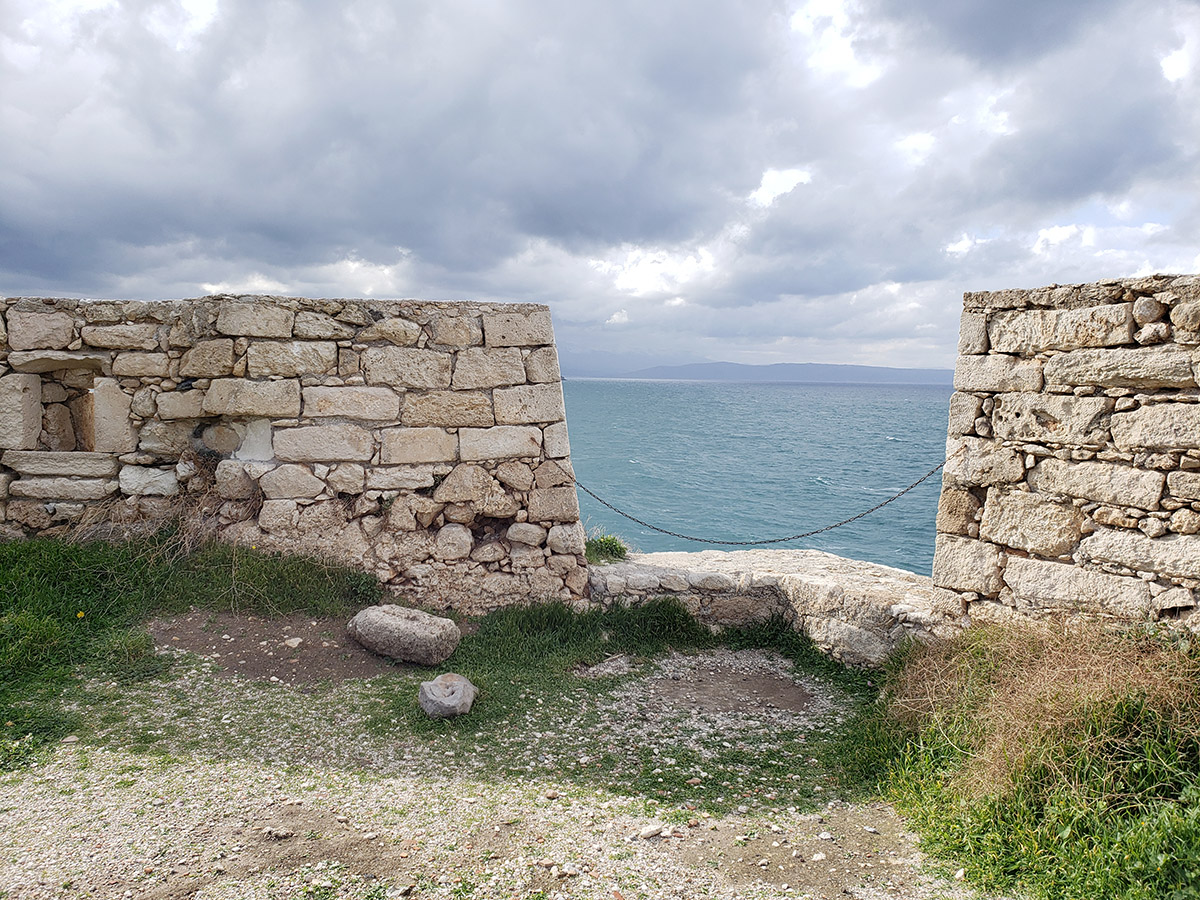
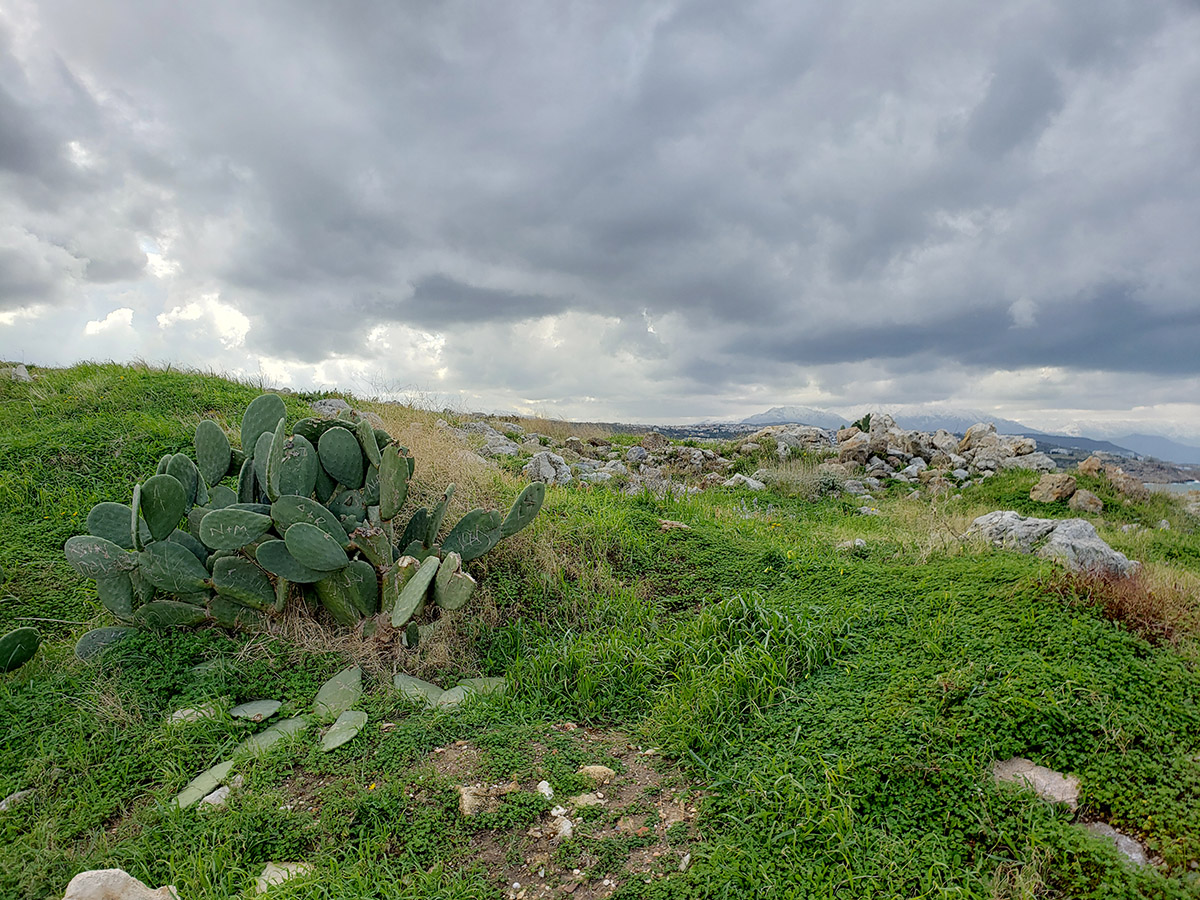
Various people have decided that this particular cactus is a good place to carve their initials, where they will remain for all eternity — or until the leaves drop off, whichever comes first.
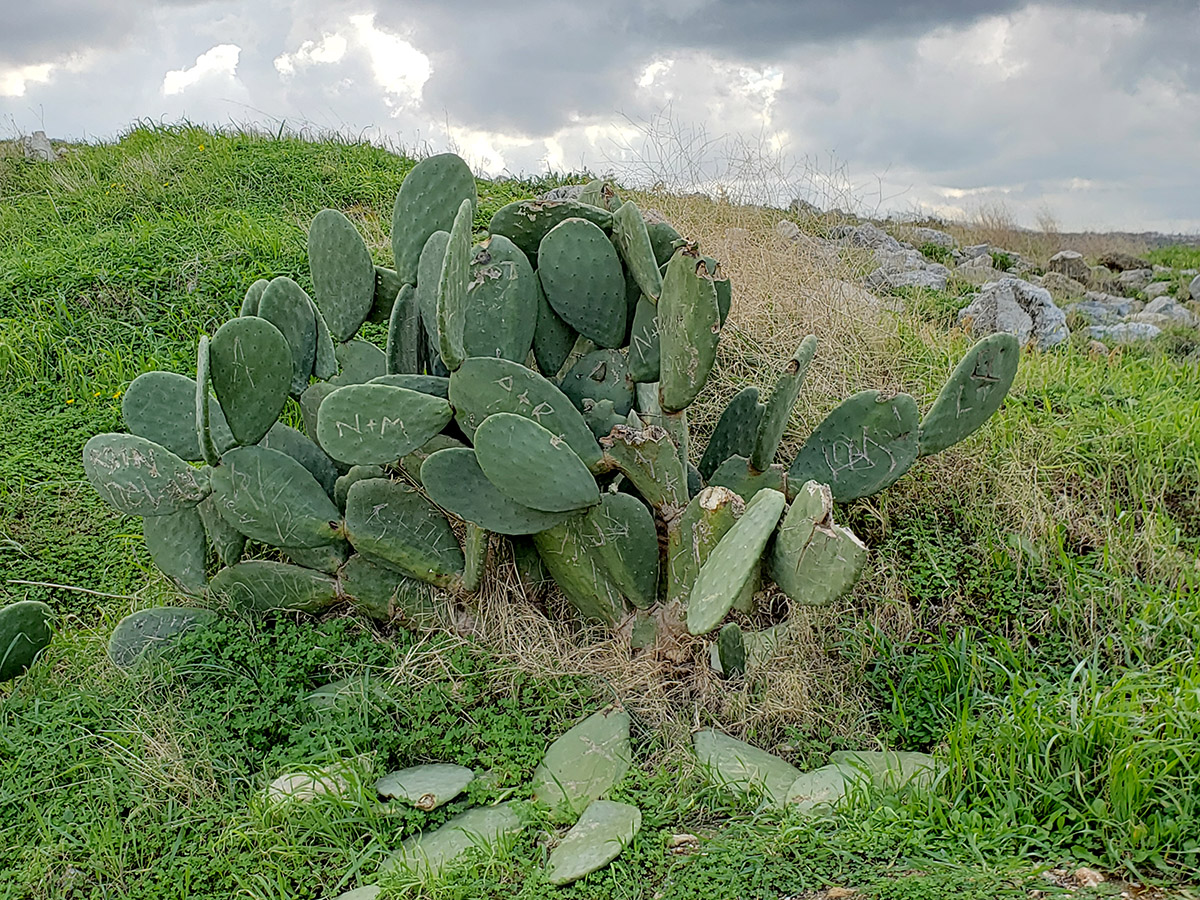
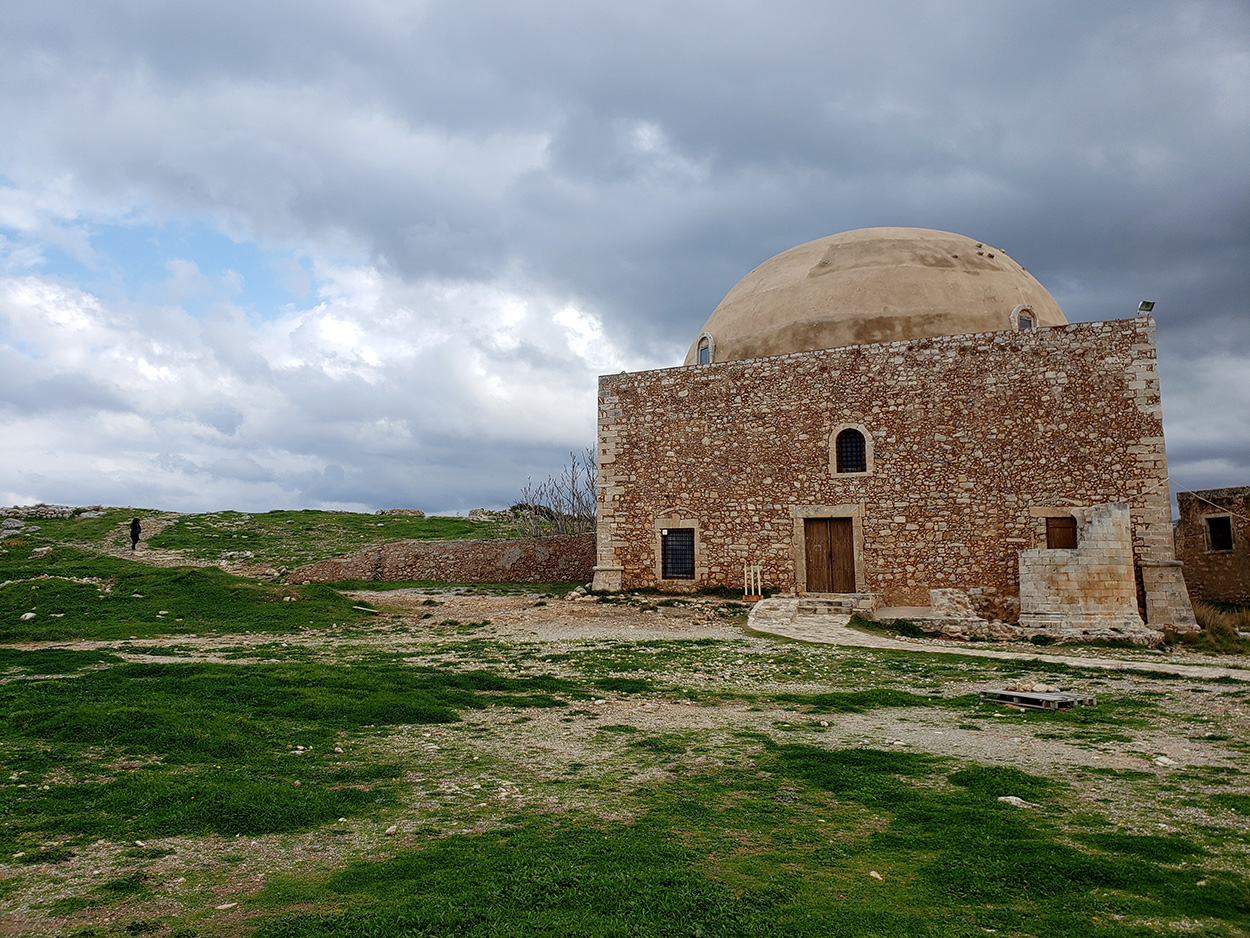
The Mosque of Sultan Ibrahim Khan sits near the very center of the Fortezza. It was constructed in 1571 as the Christian Church of St. Nicholas, then converted to a mosque in 1646 after the Ottoman invasion. At this time the rounded dome was added, a distinctive feature common to mosques across Crete. There appear to be remnants of a minaret on one corner.
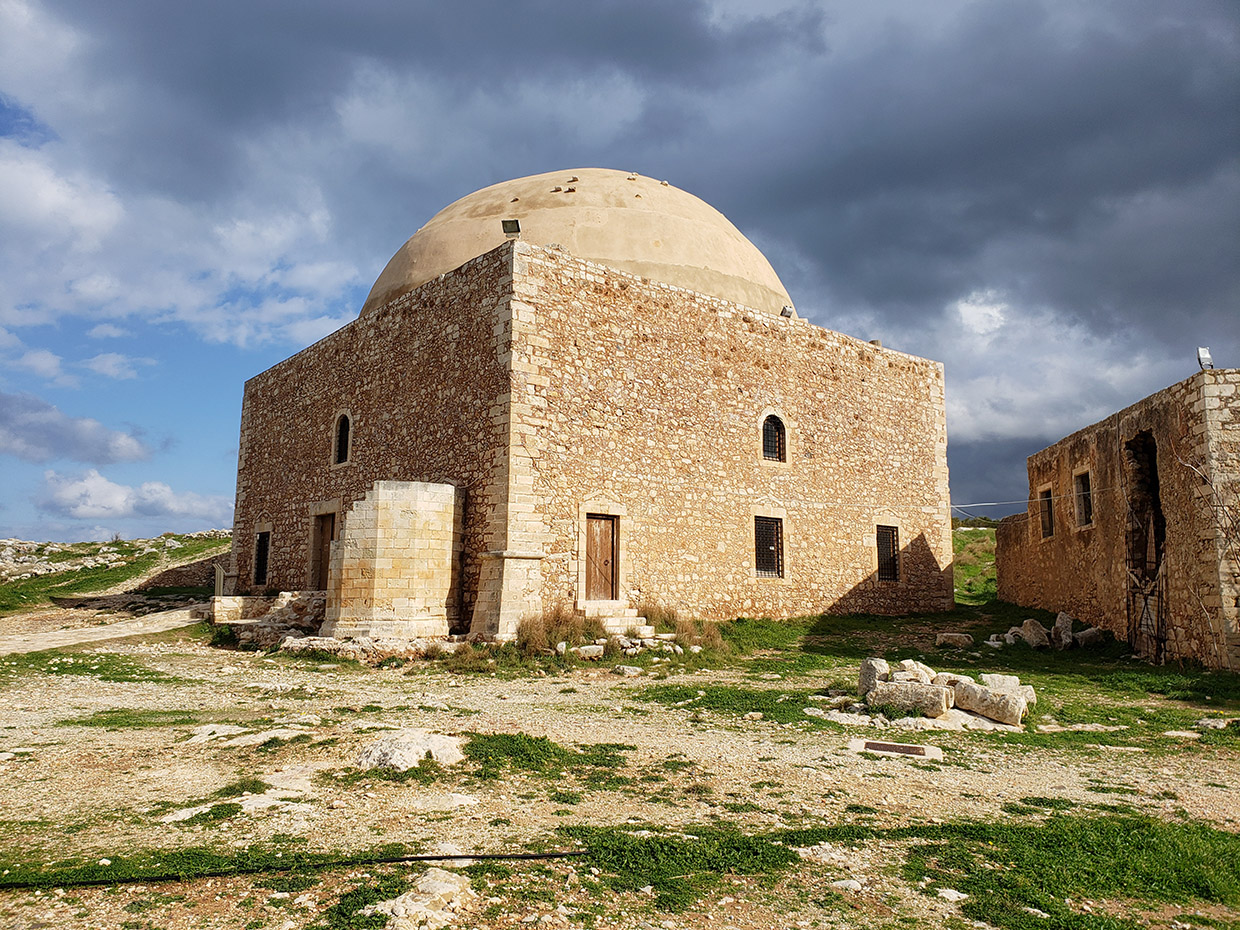
Plunked immediately next to the mosque, the Church of St. Catherine looks quaint, but it’s actually a modern building. The belfry was constructed in 1985. It’s available for use as a wedding venue.
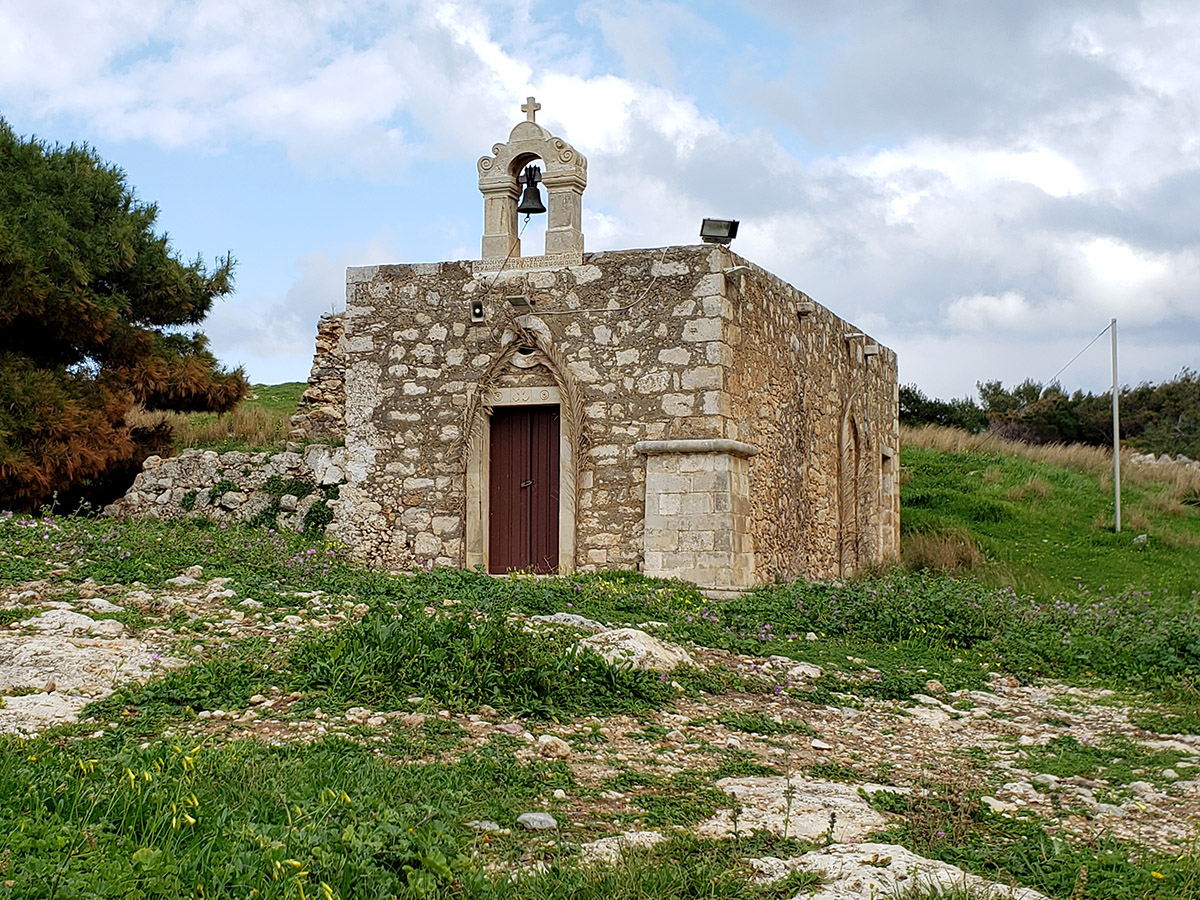
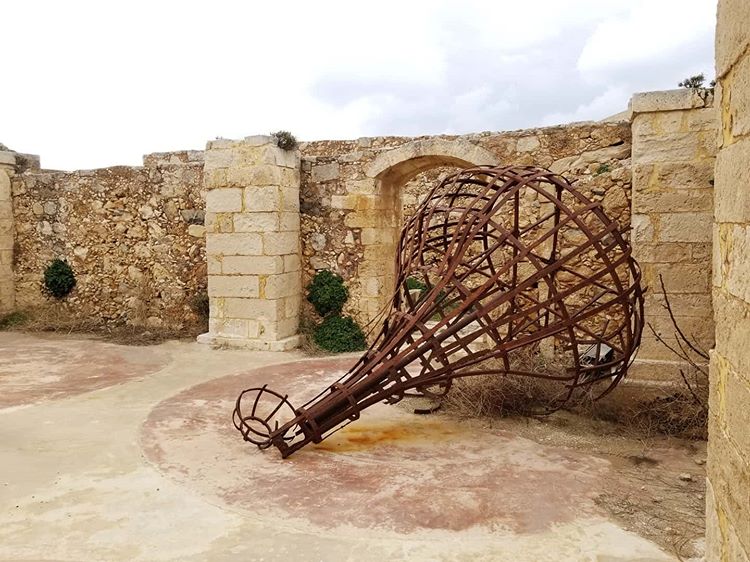
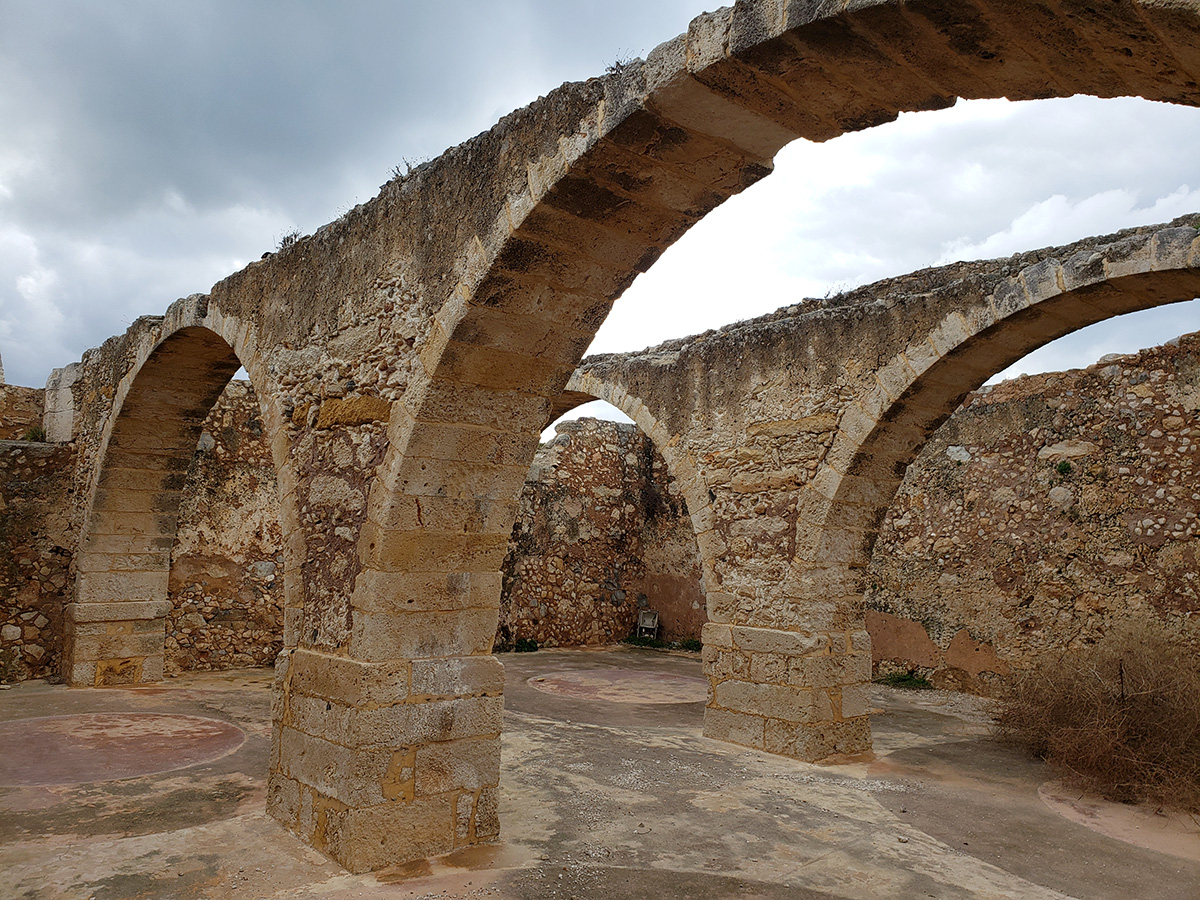
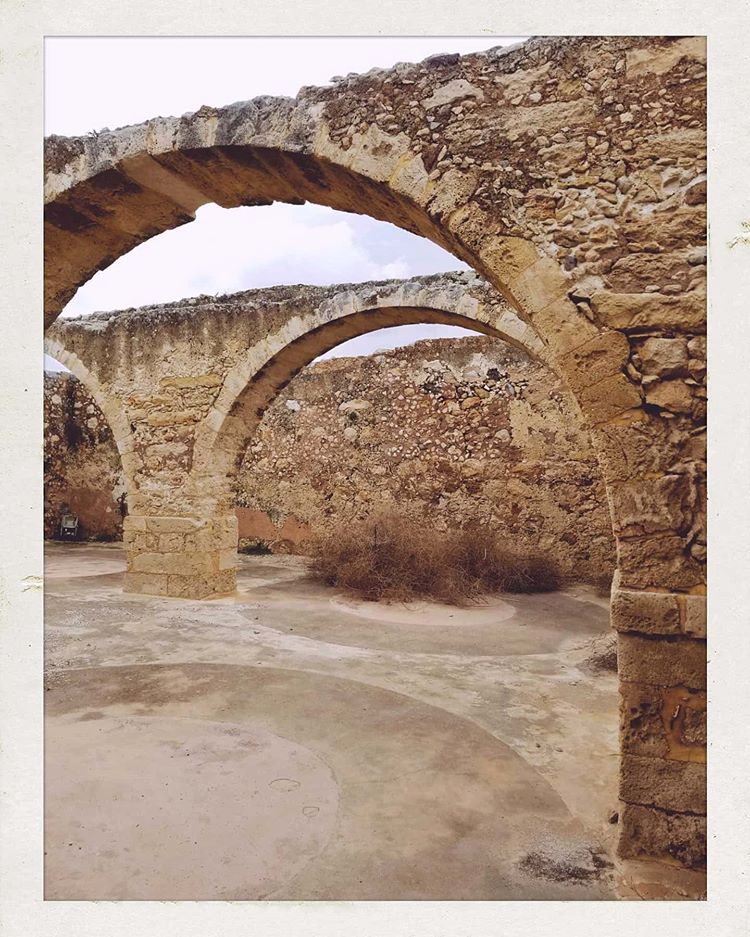
Down a set of stairs beside some attractive arches we found what we suspect may be some of the original cisterns. These vast underground tanks stored water to sustain the population of the fortress during sieges.
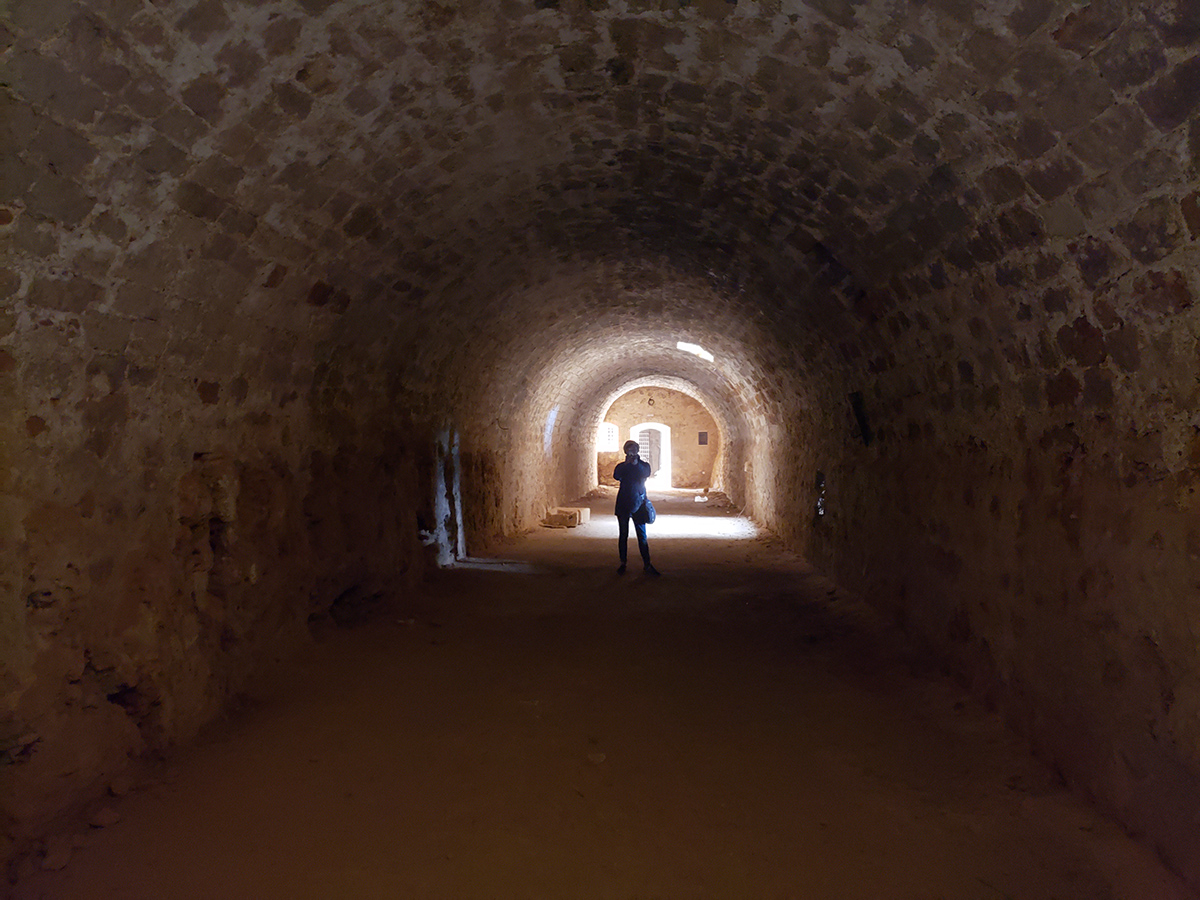
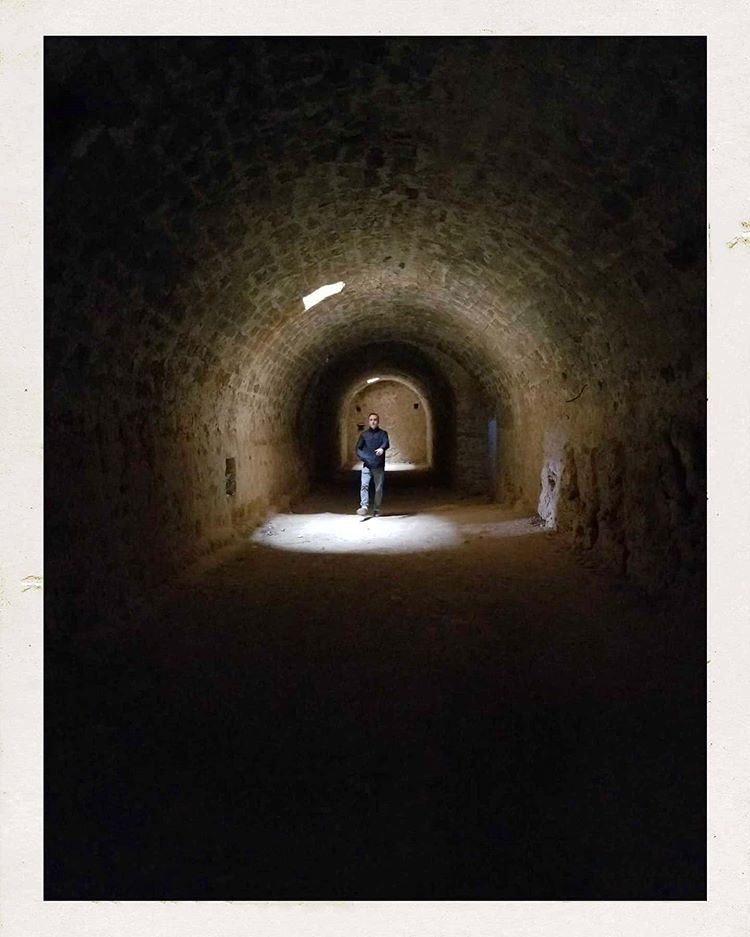
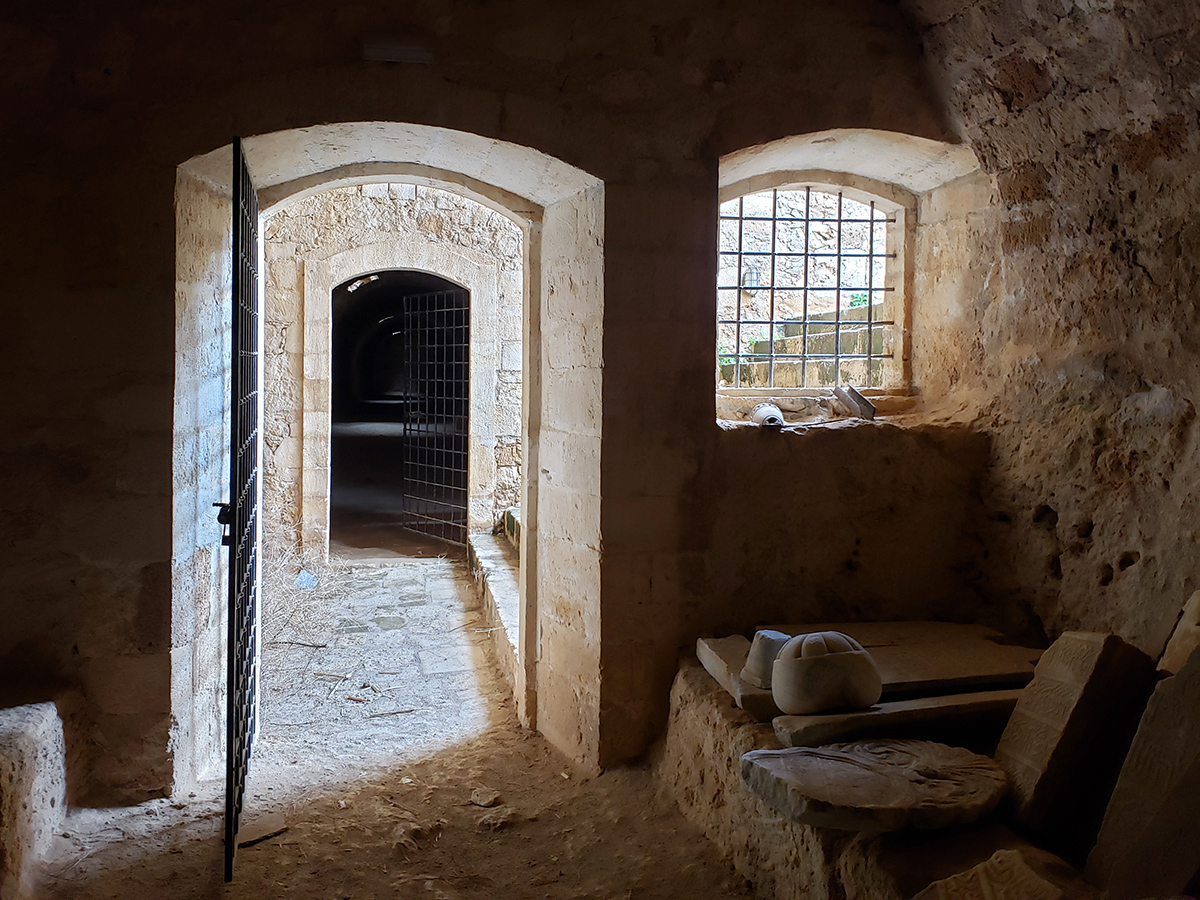
One underground room as filled with stone artifacts, piled atop each other and leaning against the walls.
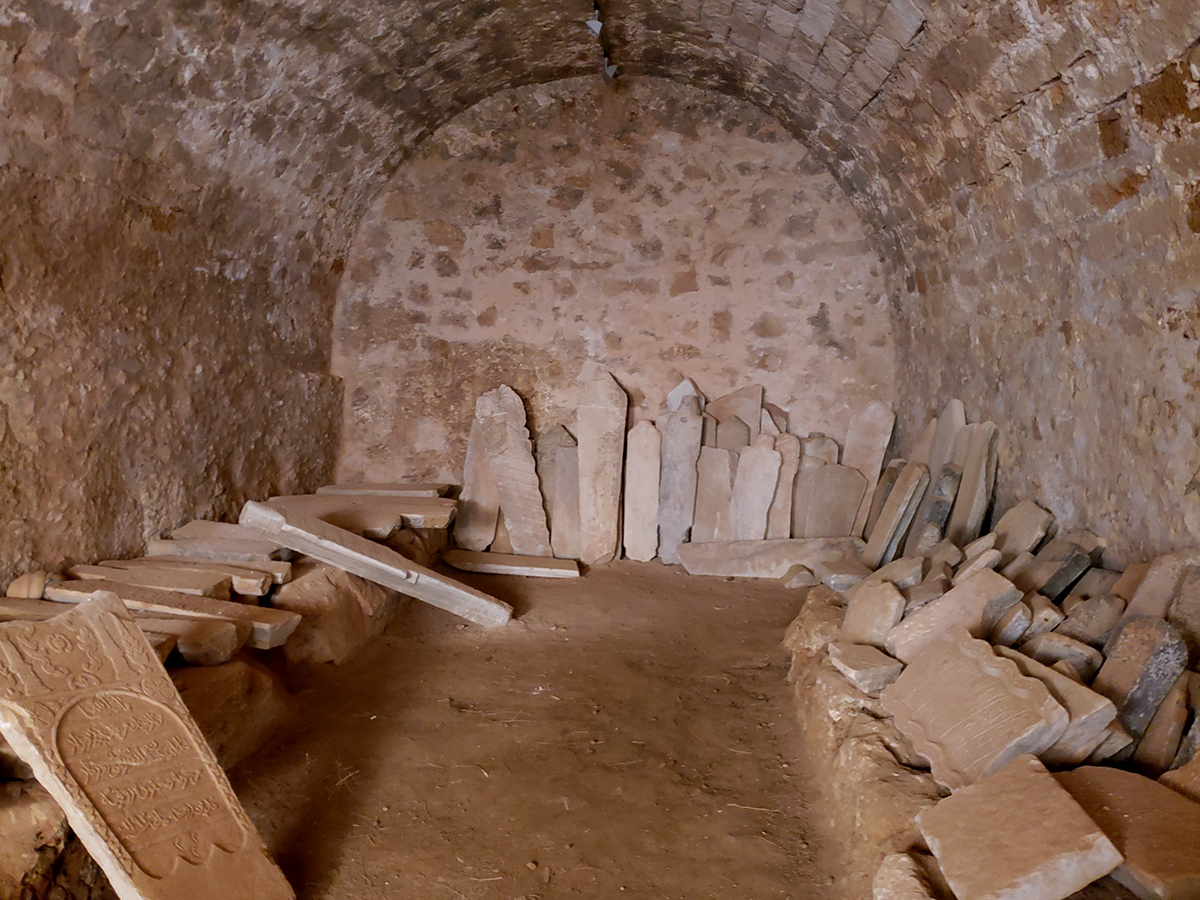
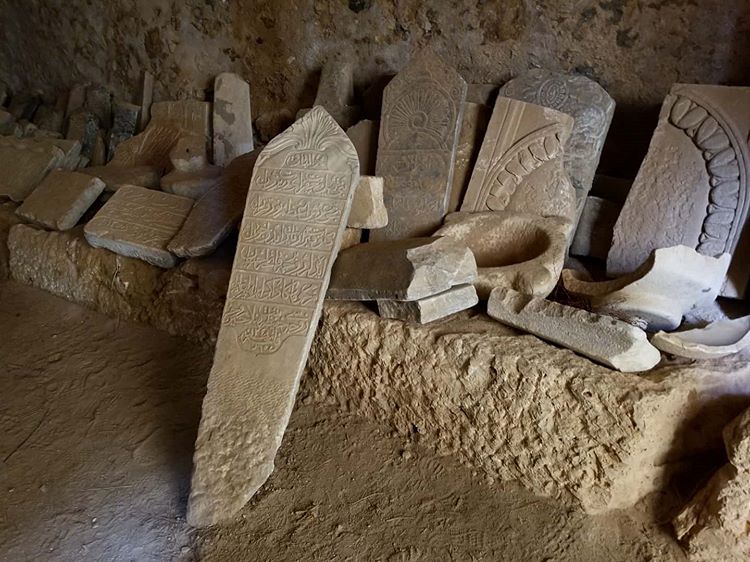
Back above ground, we traced the perimeter of the Fortezza, following the exterior walls counterclockwise back towards the entrance gate. It was very windy, but not cold.
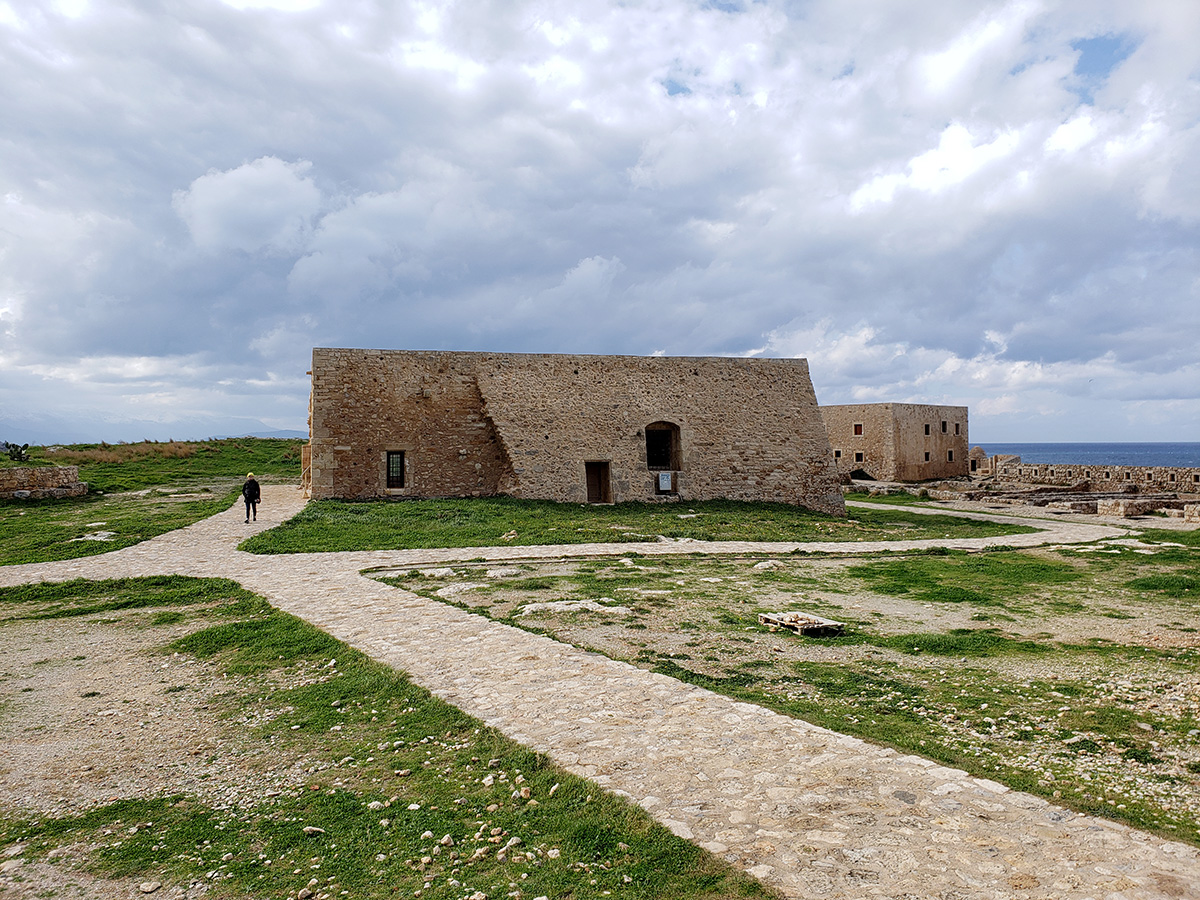
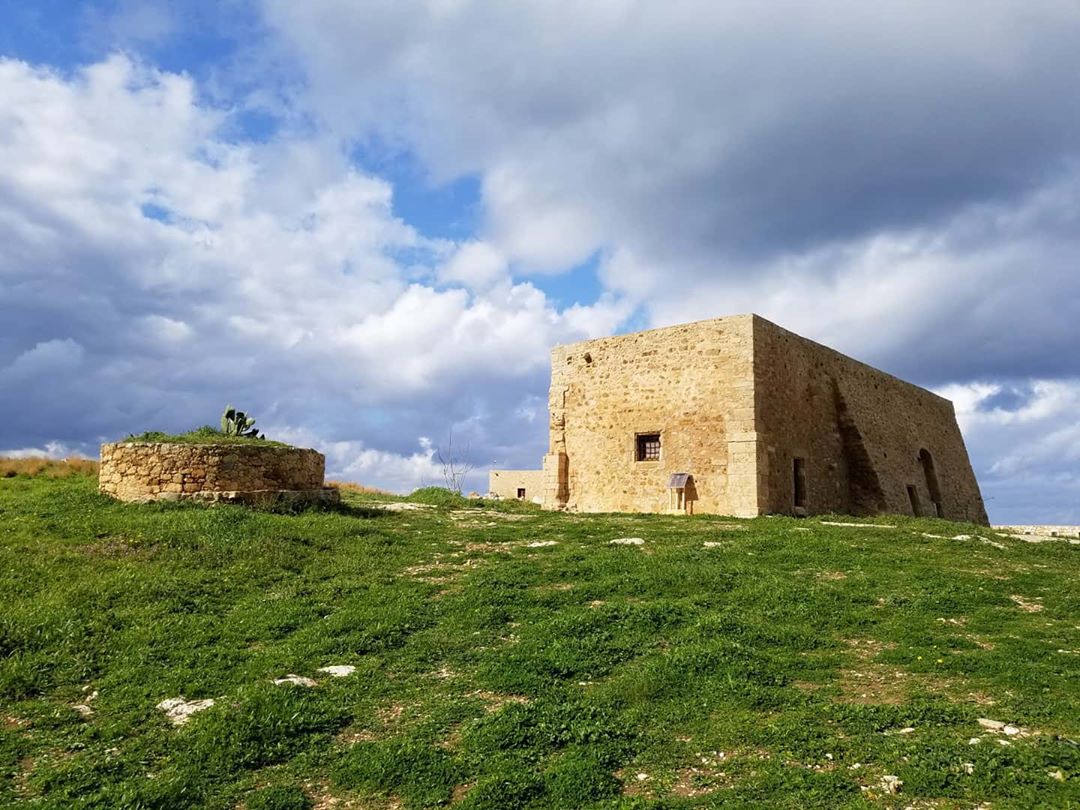
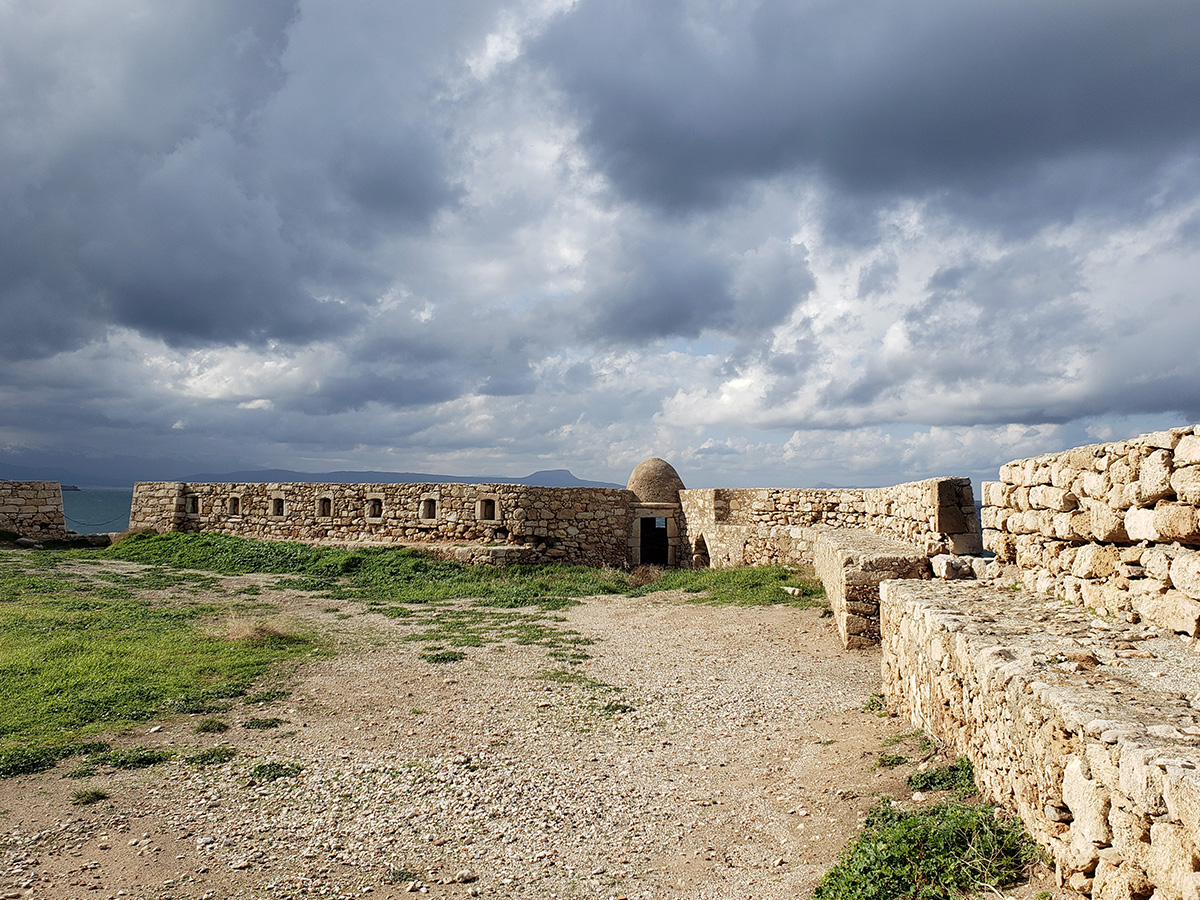
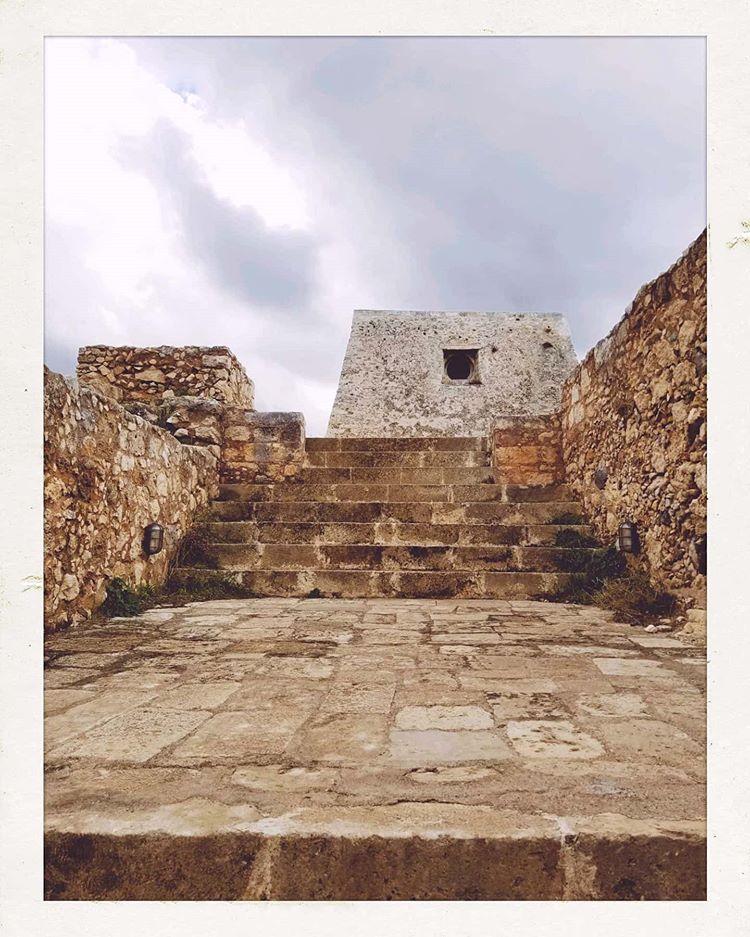
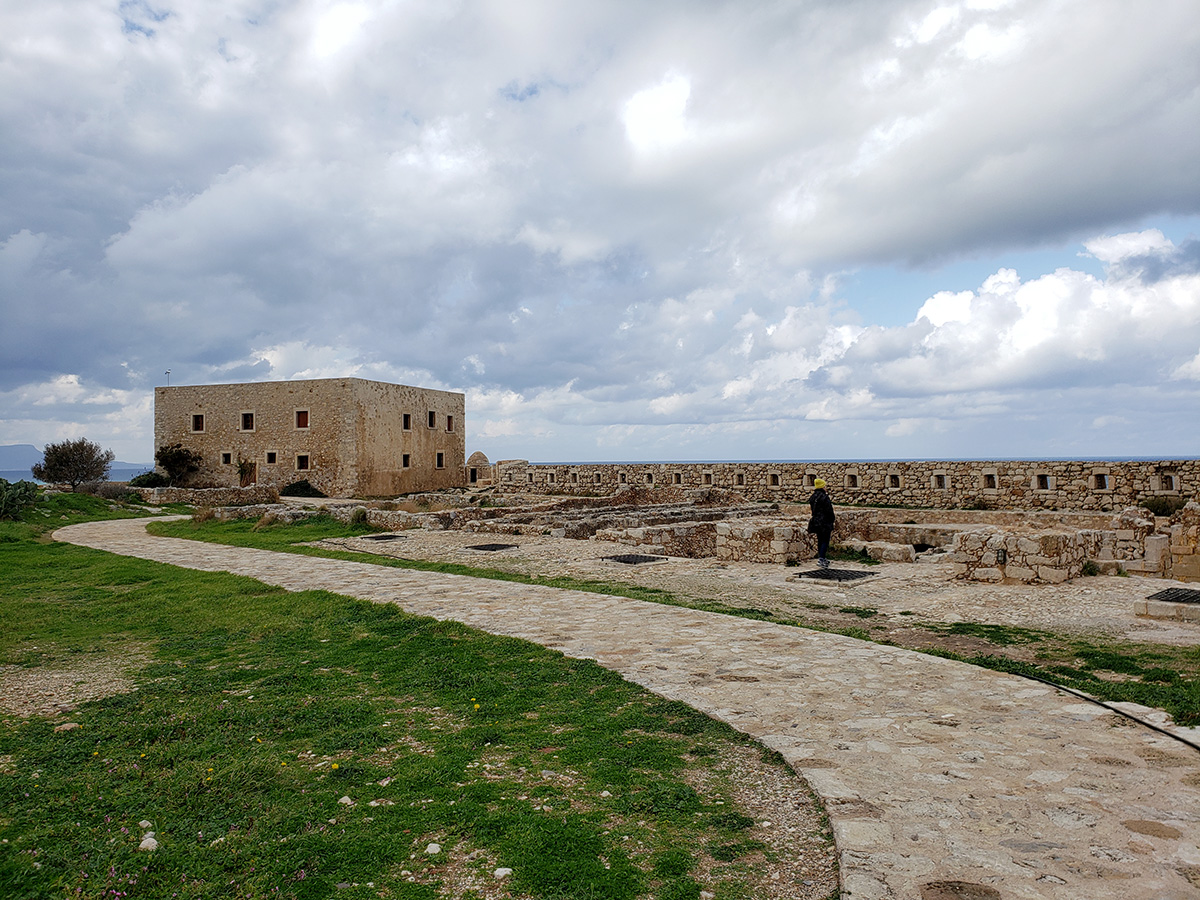
A pile of rusty cannons was stacked beside one building.
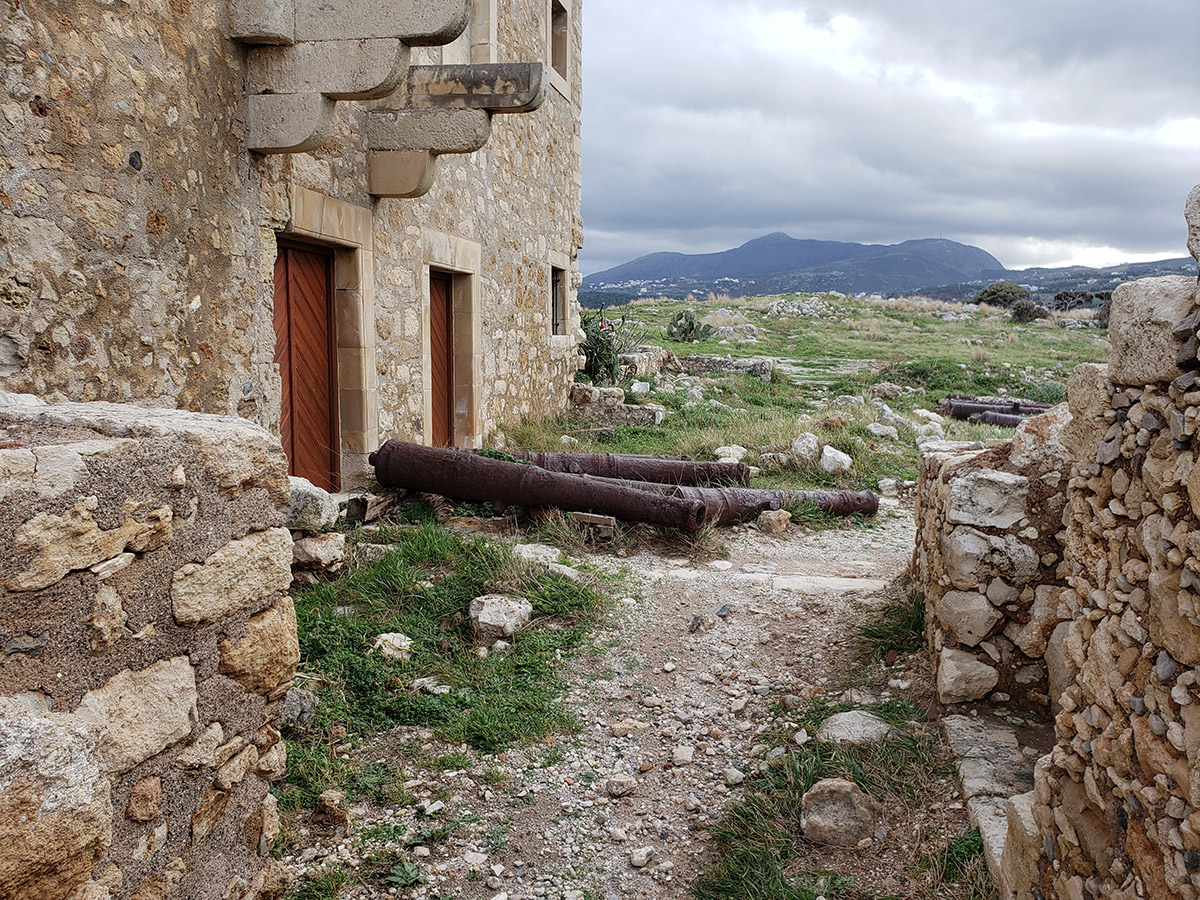
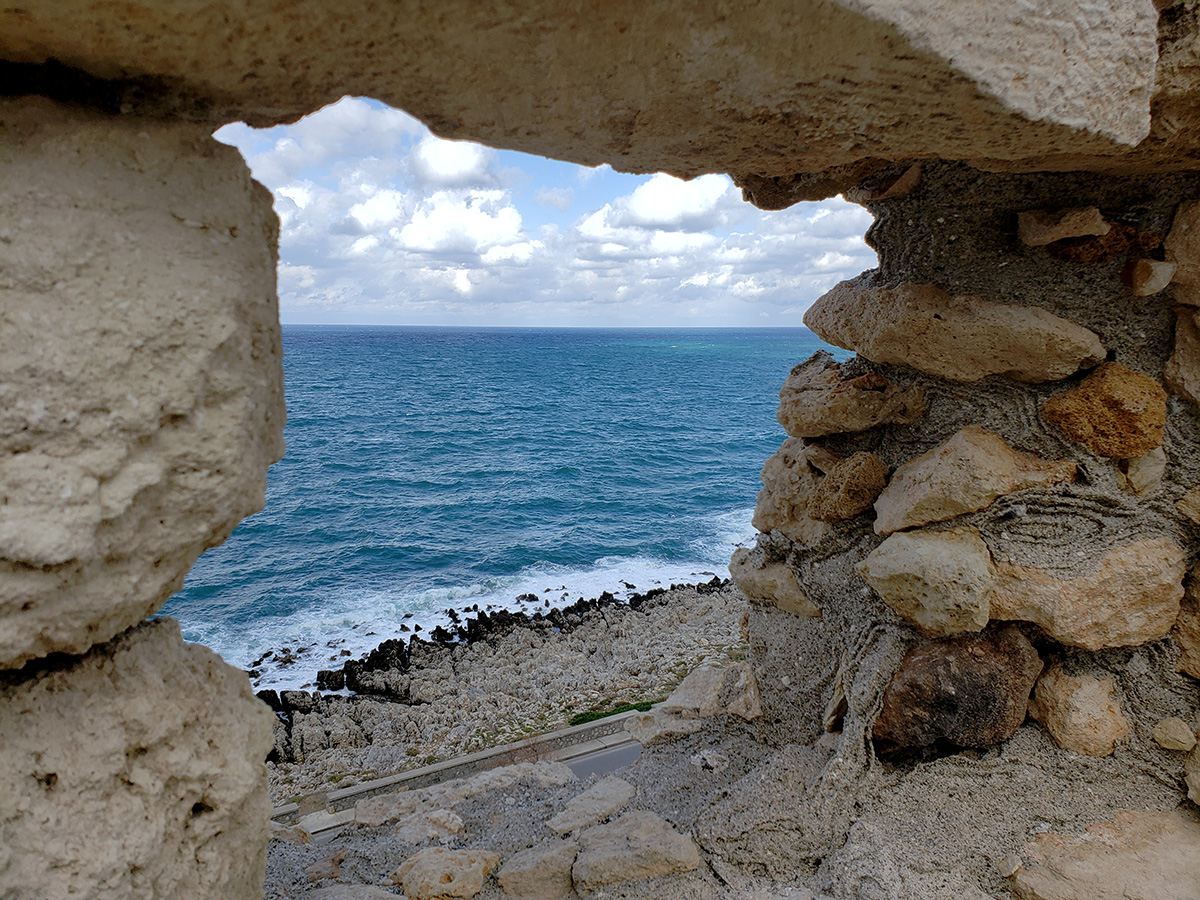
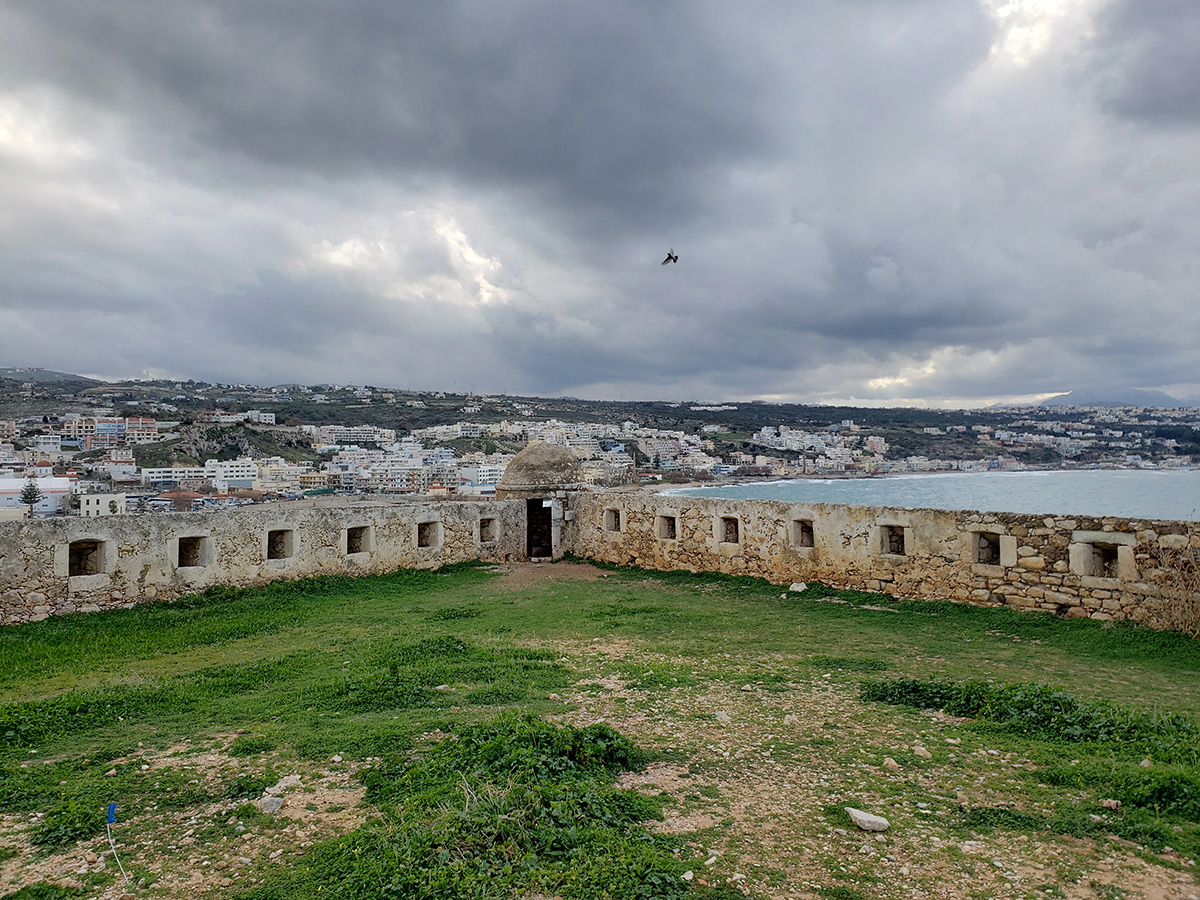
A rounded bunker built into the corner of the walls looked intriguing, but once inside I realized that it was also serving as the world’s oldest covered litter box for the resident Fortezza cats.
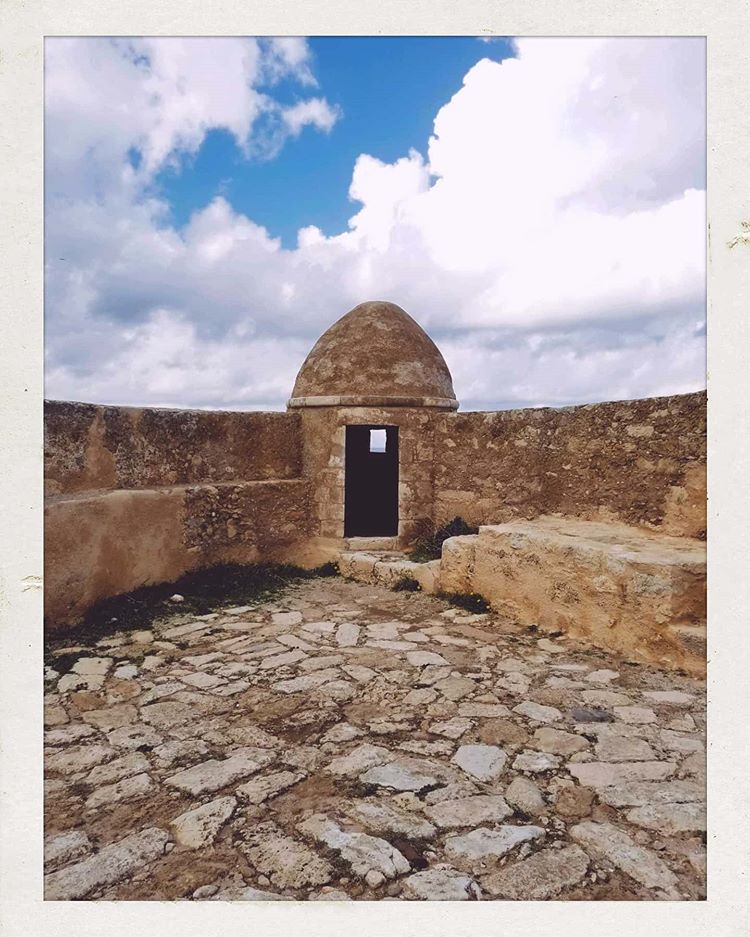
I endured the cat stench long enough to take one nice photo through the window.
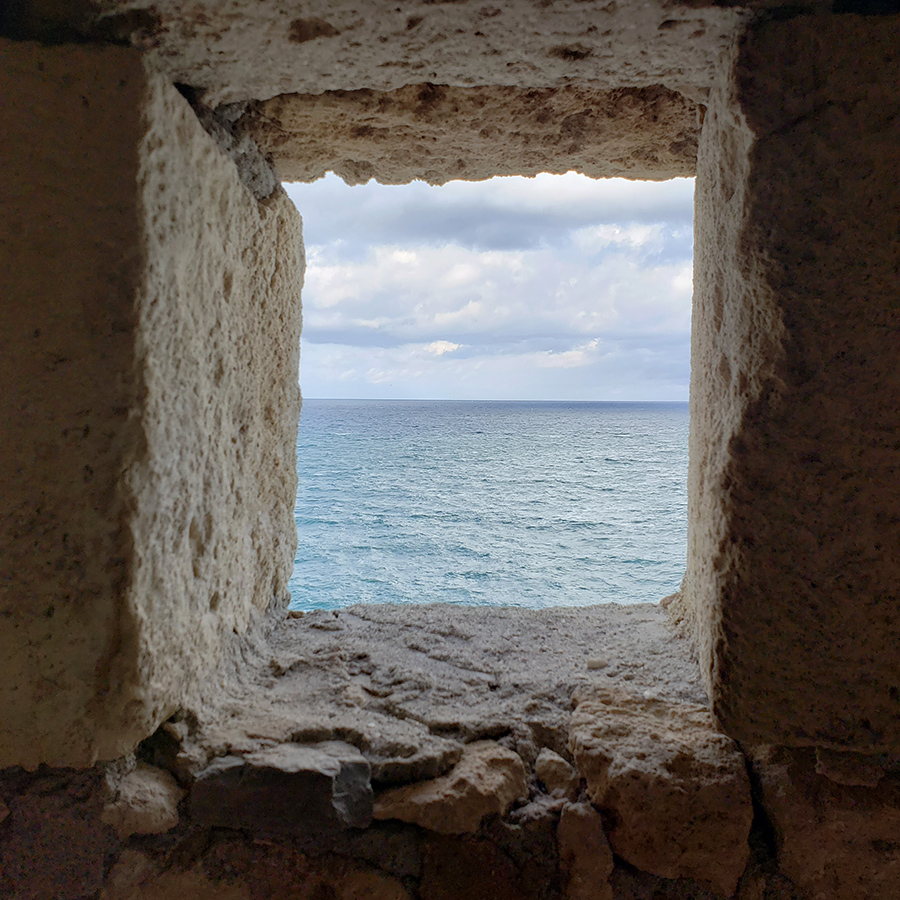
Around to the southwest, the views overlook the town of Rethymno. The February skies were once again dramatic and changeable, as they were often during our time in Crete. Sometimes photos taken only moments apart look totally different.
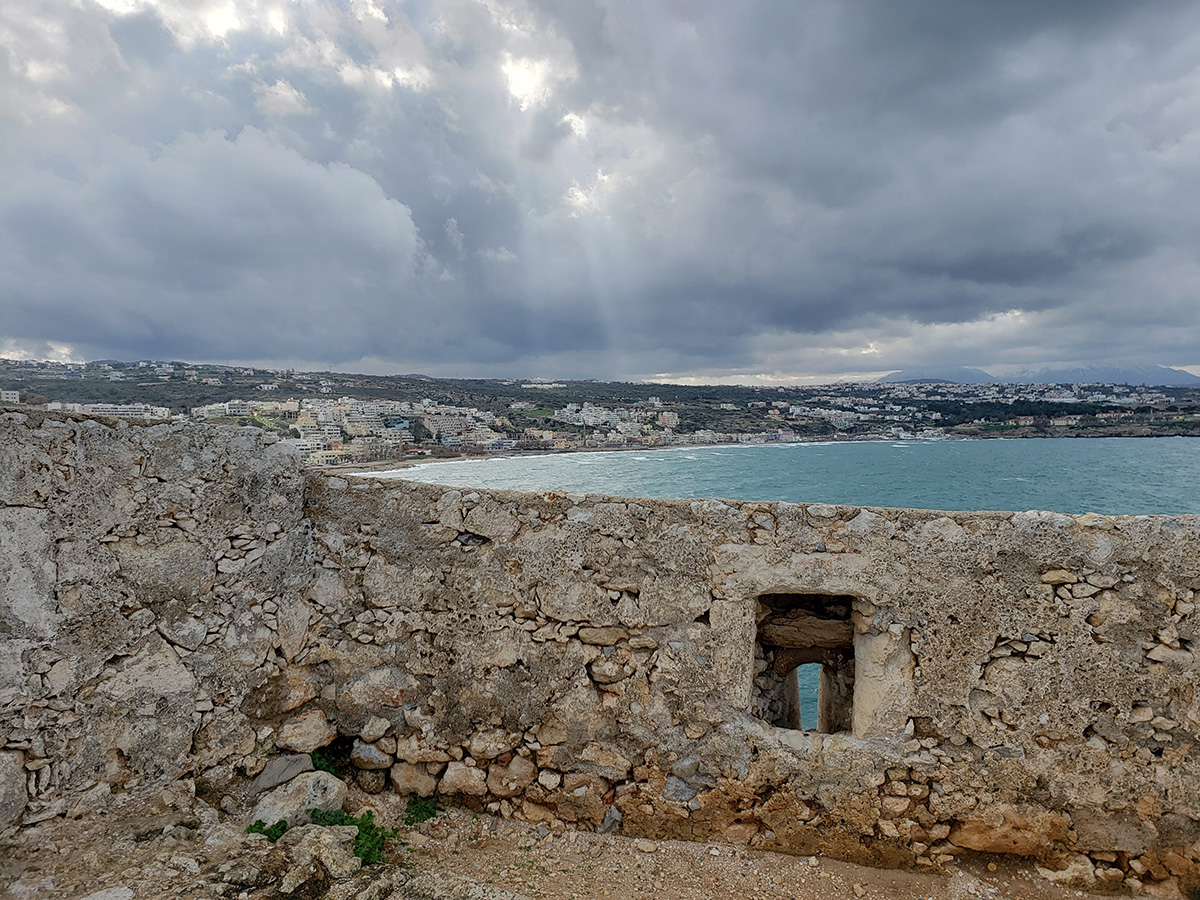
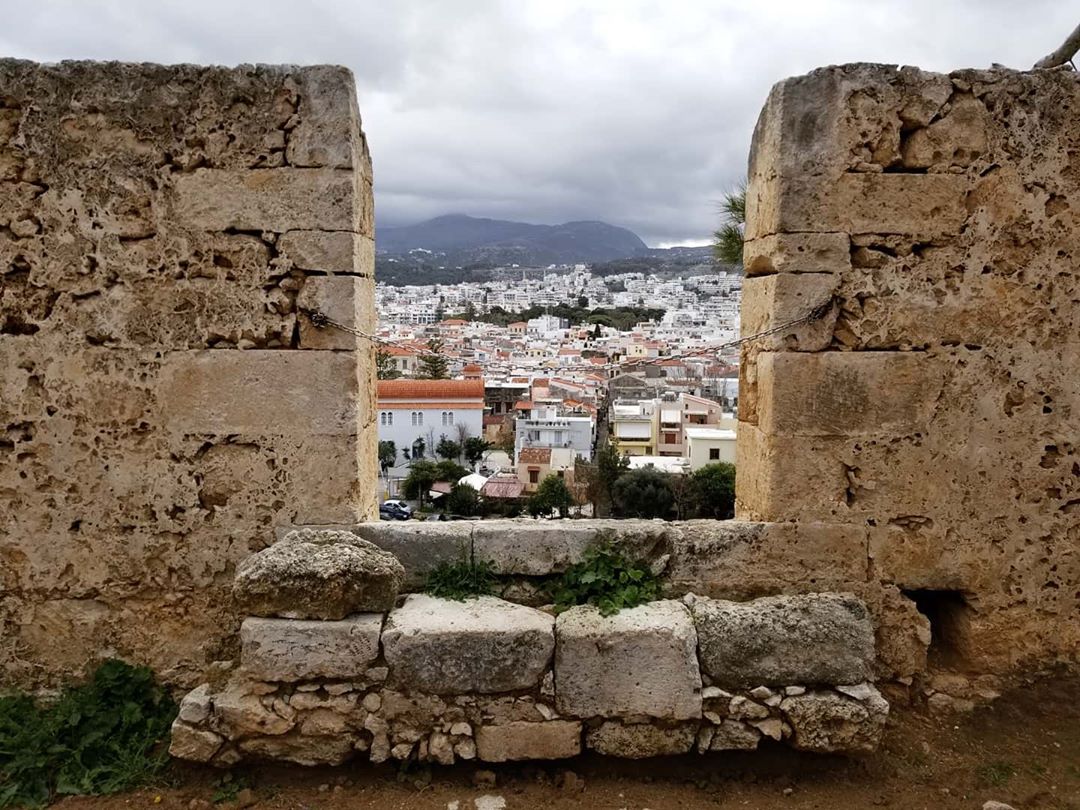
In one corner things got a bit marshy and there was a thatch of somewhat scraggly bamboo.
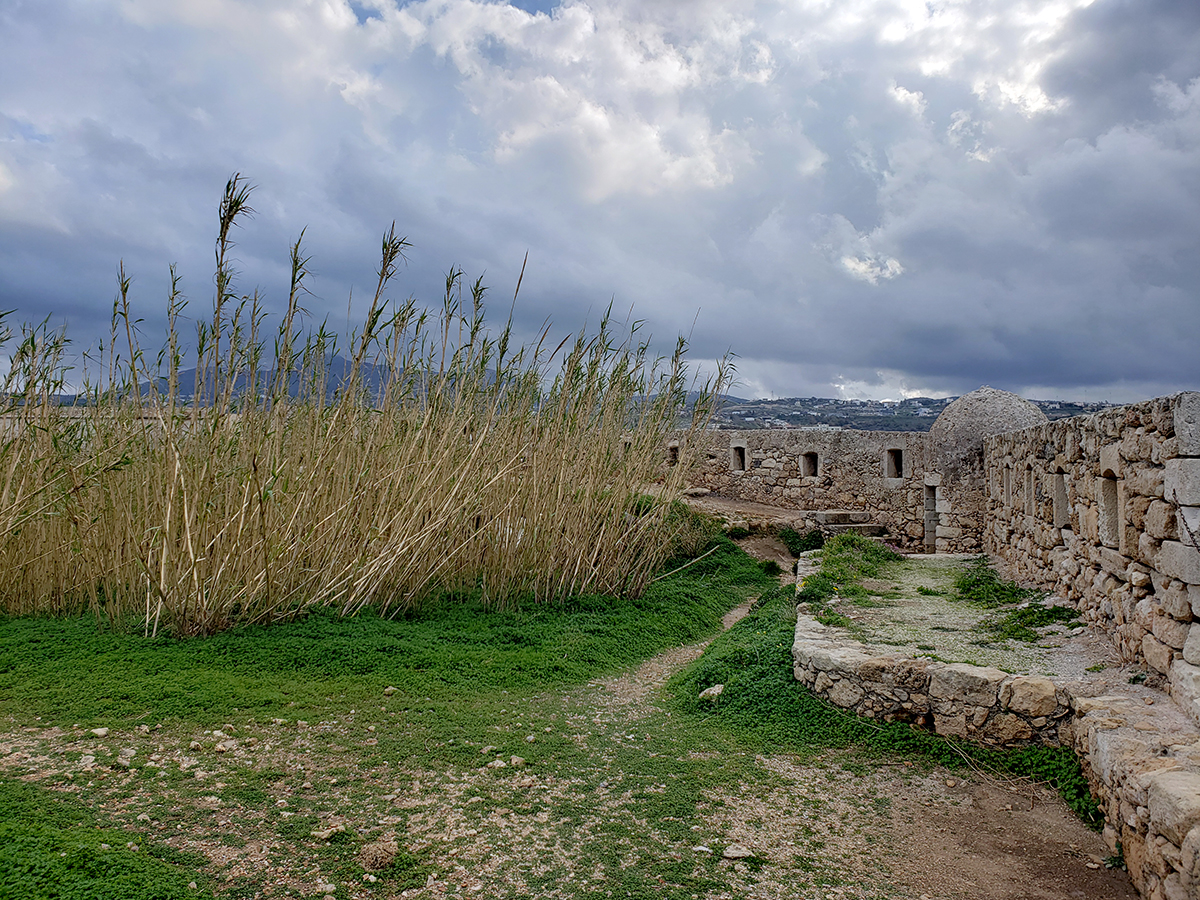
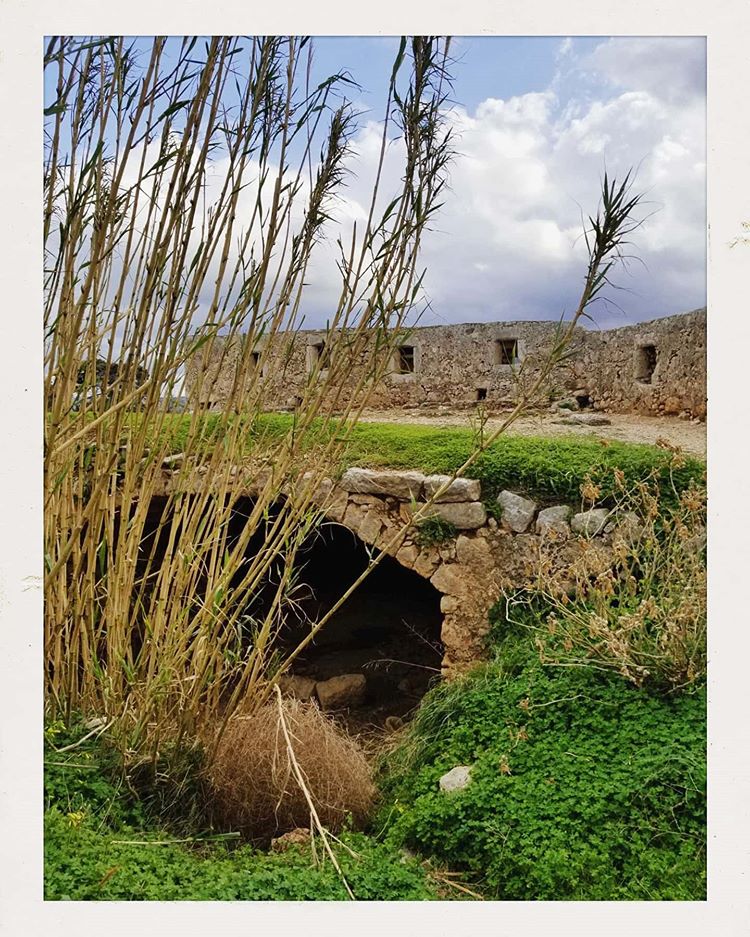
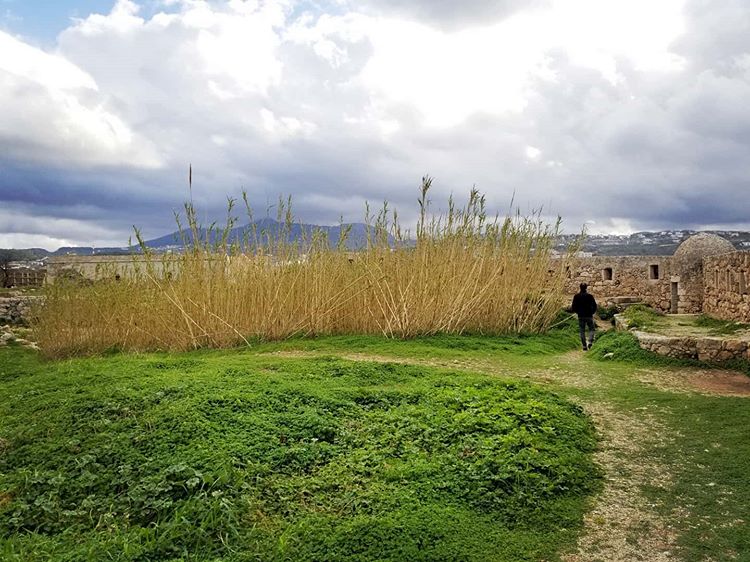
In other areas, the landscape was rocky and barren, almost reminiscent of Iceland. About a century ago some of the interior of the Fortezza had been filled with houses. These were demolished after WW2 and their occupants relocated to the lower city.
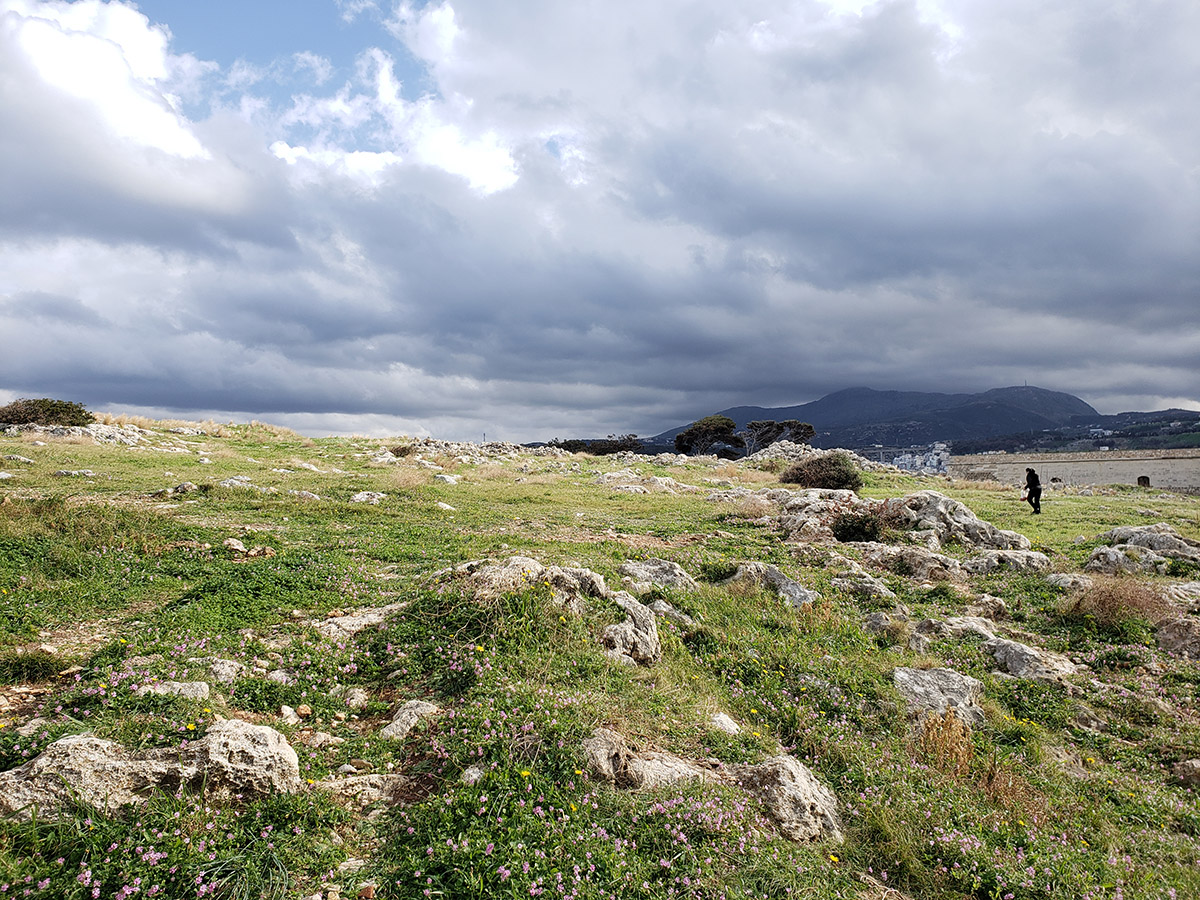
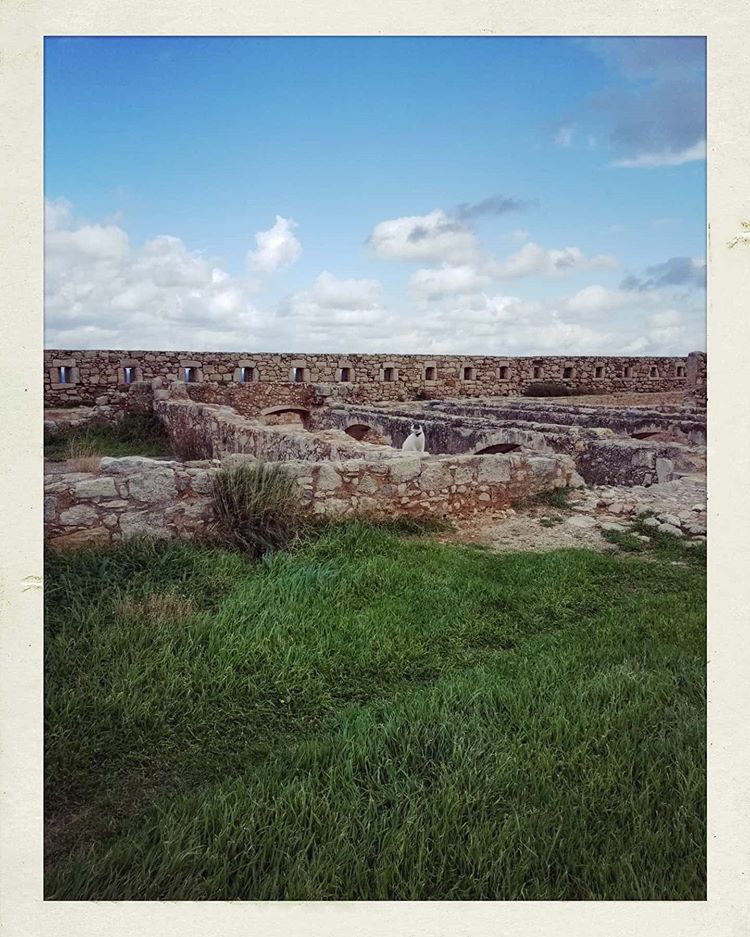
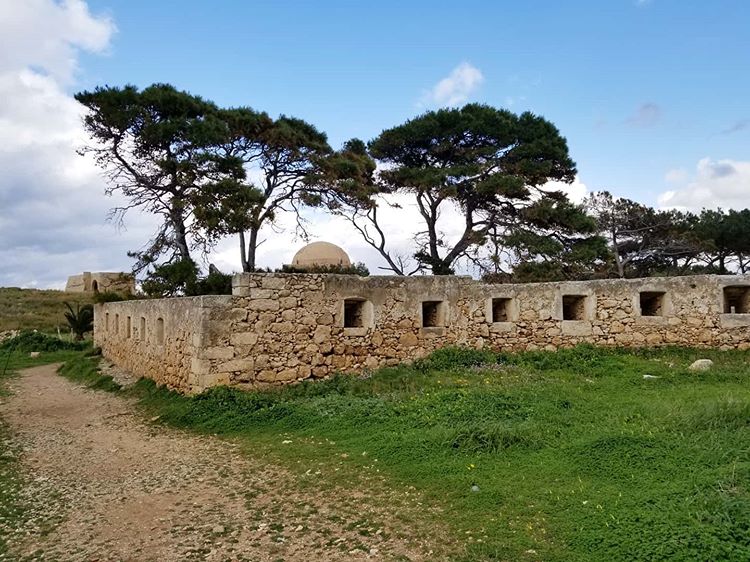
Back near the entrance, we passed the open-air Erofyli theater.
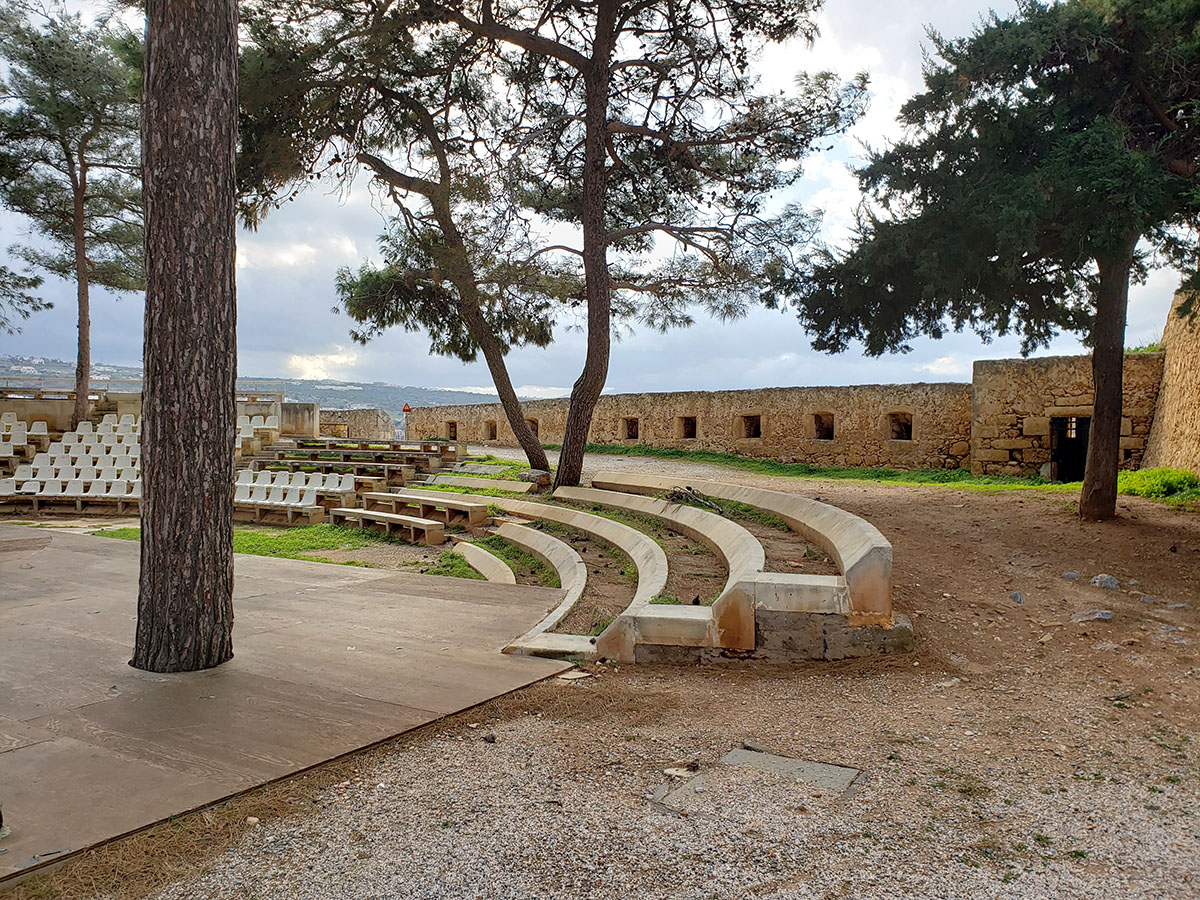
Exiting through the Eastern Gate we were befriended by a cat who rubbed against us and wanted to be petted. The big bowl of cat food was nearby so we don’t think the cat wanted food, just attention.
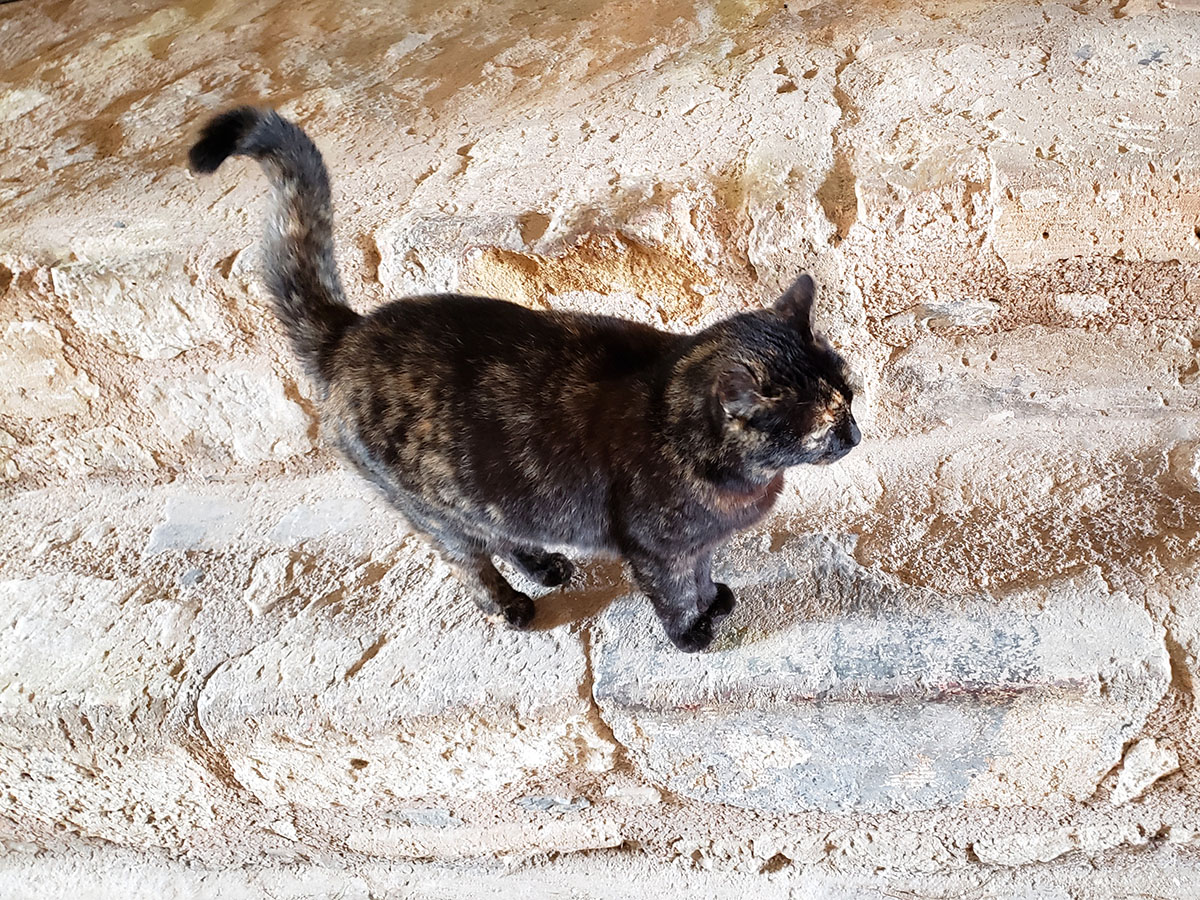
But then our new friend wanted to come with us and followed us out the gate. We had to quicken our pace down the hill so the cat wouldn’t follow us too far from the fortress.
